26% Cub Crafters CC11-100 Sport Cub S2
Maneuver Datasets
The results visualized below are a subset of the complete data set collected and as such provide a sample representation of what is available. All of the maneuvers shown below, among the rest, are available for download in Dataset Downloads . These datasets include plots of trajectories and time history of state data and the flight data. Maneuvers were performed following the test plan presented in Flight Test Matrix.
About a dozen flight tests were performed, each of which contained multiple maneuvers that varied in the type (idle descent, phugoid, etc.) and permutation (limited deflection, full deflection, no flap, half flap, full flap, etc.). The data was cut based on written notes of what was performed along with visual inspection of the data using aircraft trajectories and time history of state data. The resulting maneuver data sets were then filtered to remove erroneous measurements of maneuvers, such as those resulting from external environmental effects (wind and turbulence), and to provide the best representation of the aircraft behavior.
Idle decents are given below for zero and half flap settings. The flight speed of the aircraft decreases from 20 to 12 m/s as the flap settings changes from the zero to half setting. The trajectories followed by the aircraft depend upon wind direction, the initial heading, and flight speed of the aircraft when the maneuver was conducted. Though the trajectories differ slightly, the response of the aircraft is the same for both flight test cases.
Idle decent with no flaps
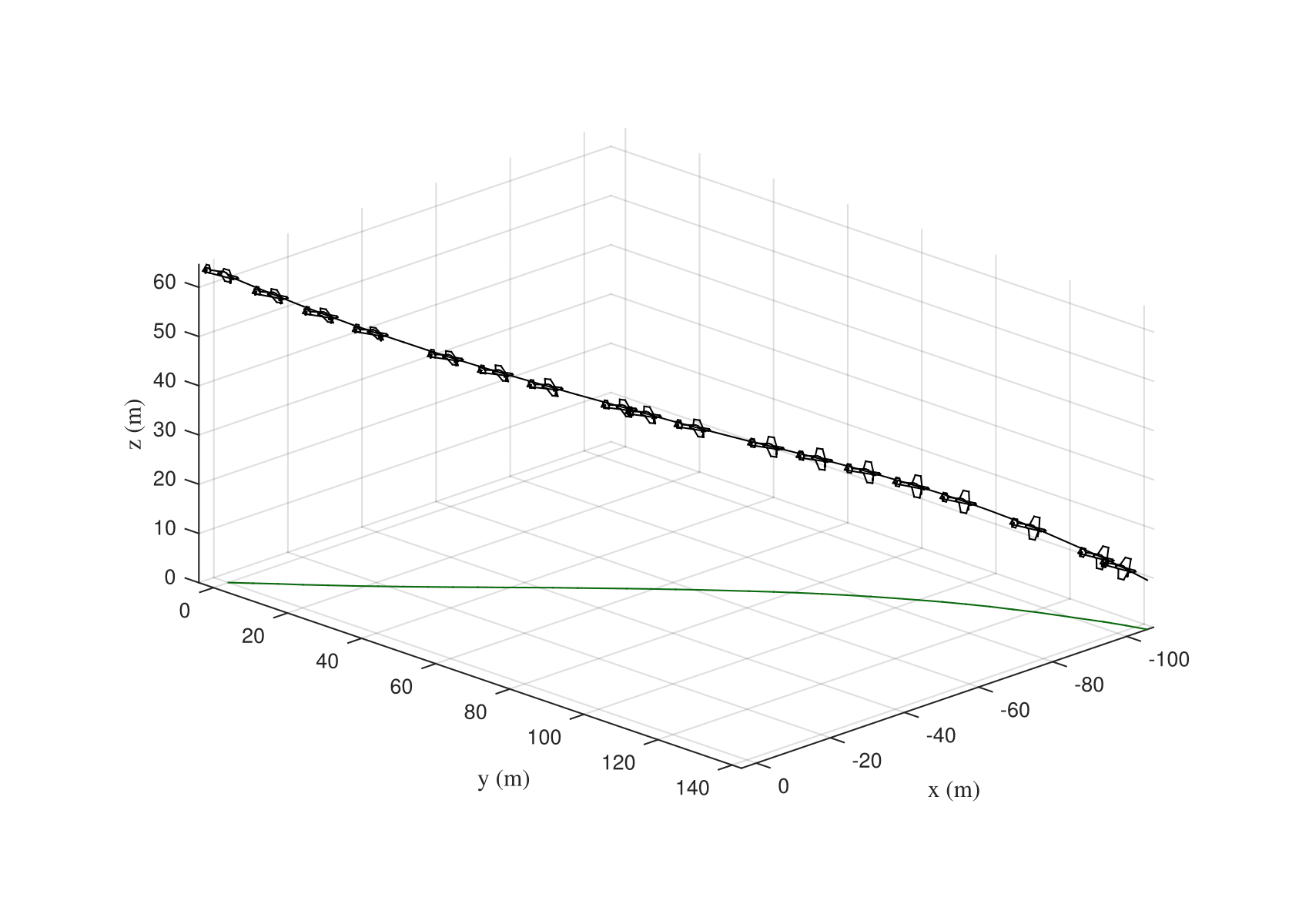
Trajectory of the aircraft during idle decent with no flaps.
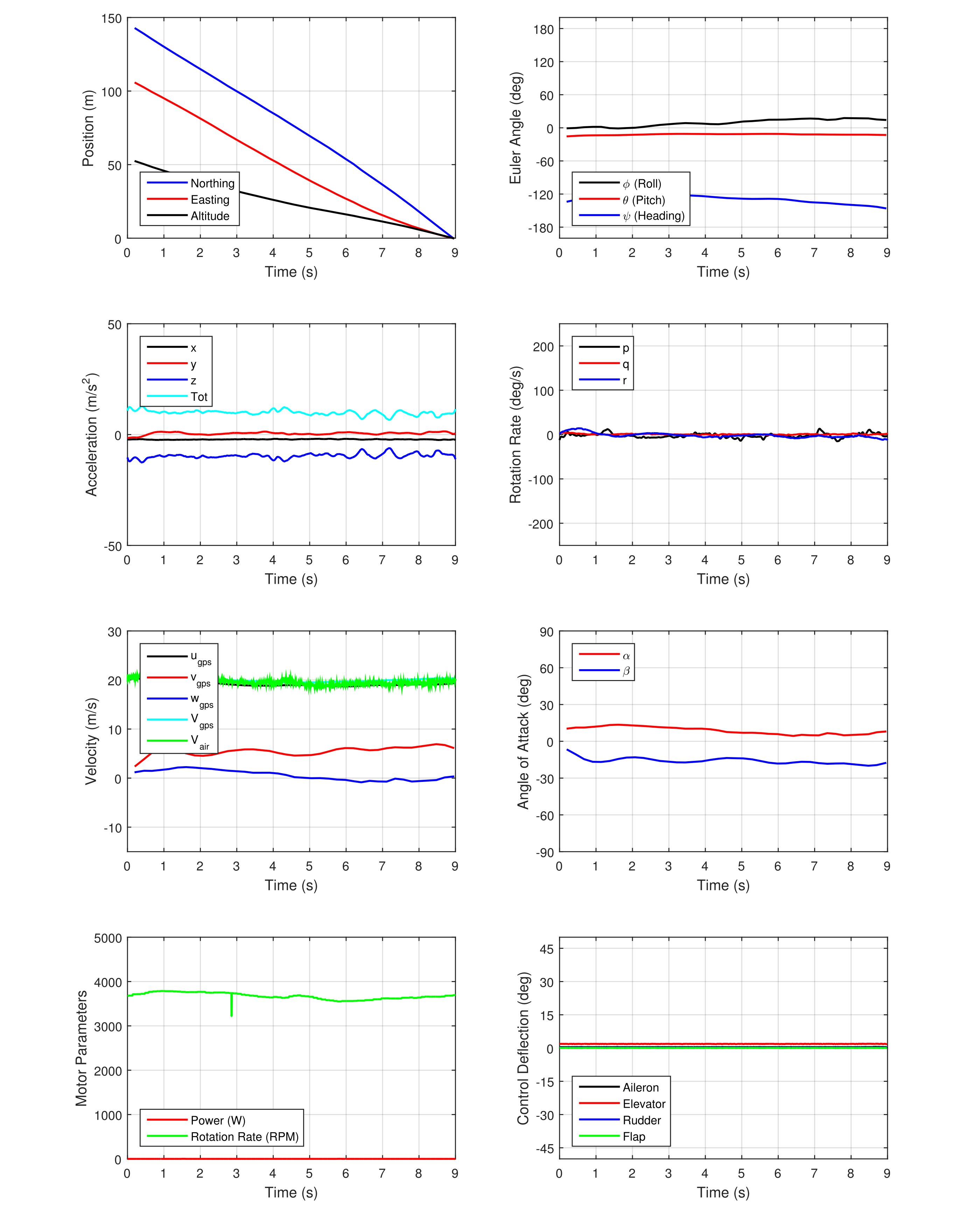
Time history of aircraft state during idle decent with no flaps.
Idle decent with half flaps
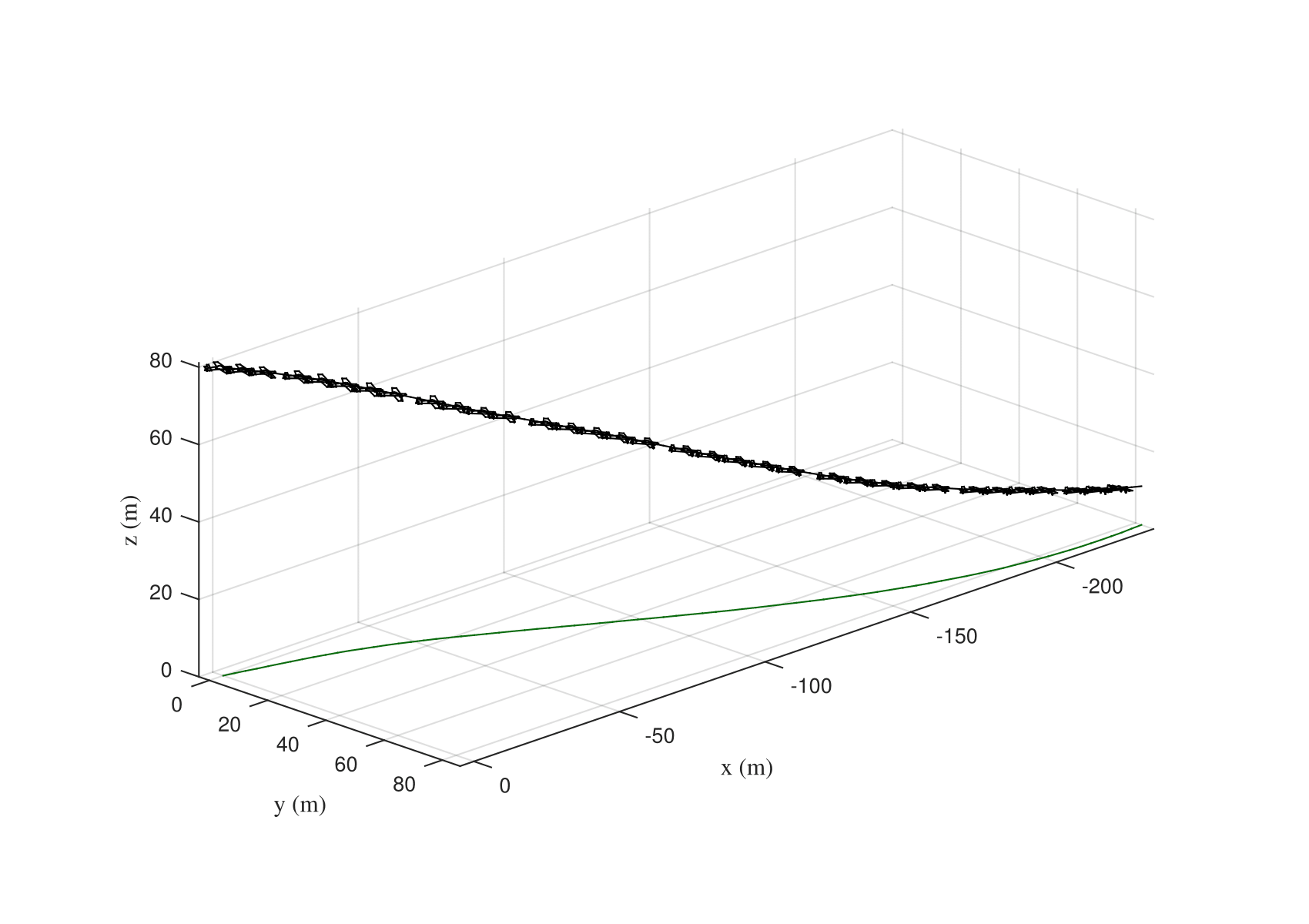
Trajectory of the aircraft during idle decent with half flaps.
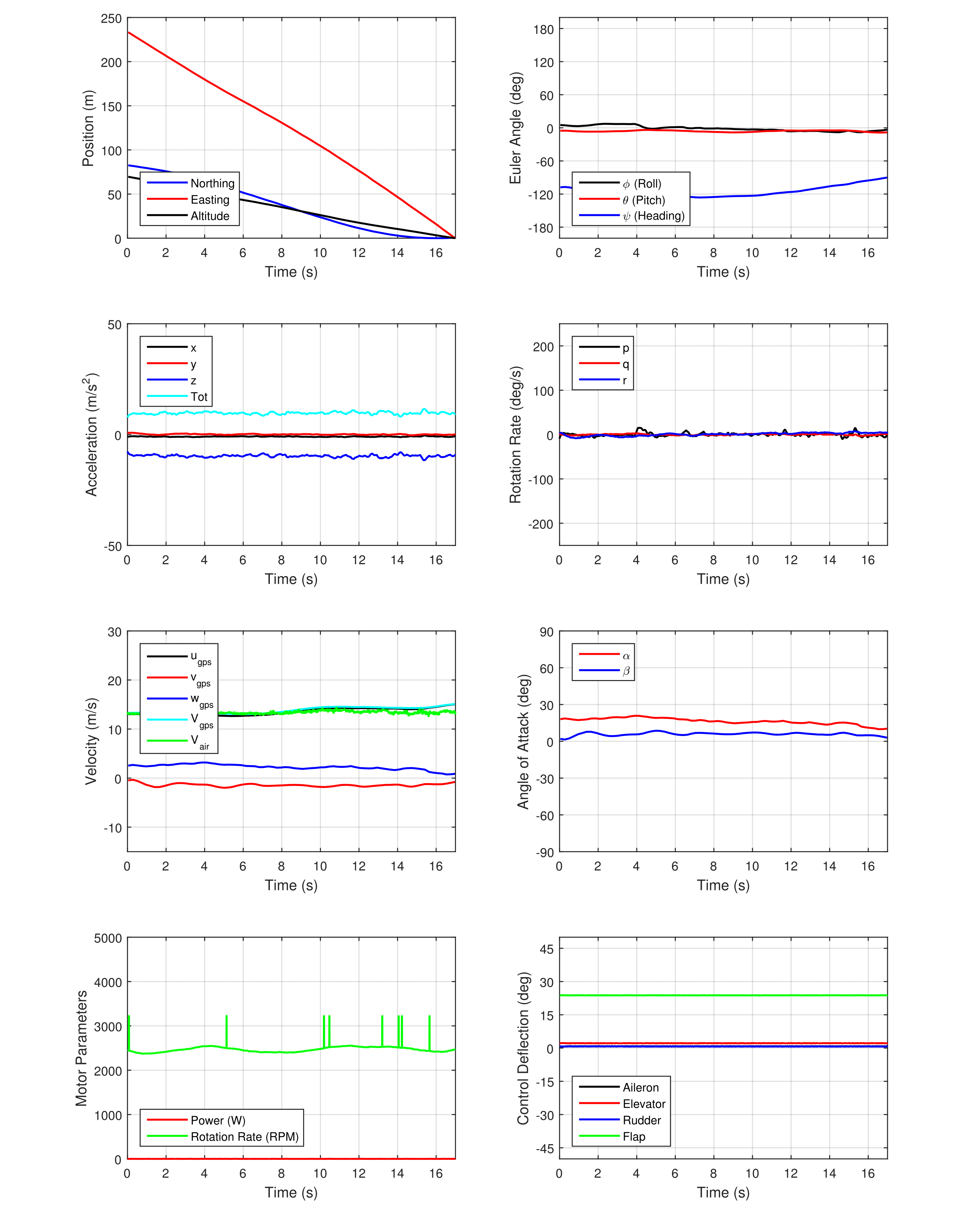
Time history of aircraft state during idle decent with half flaps.
Pitch responses are shown below where the aircraft pitch will change as a response to the elevator input. As the aircraft was trimmed and balanced to the manufacturer specifications, it tended to settle back to its trim settings for up elevators due to the positive pitching moment of the wing. When down elevator was applied, the aircraft continued to pitch nose down, as the aircraft would trim at a lower angle of attack.
up elevator response
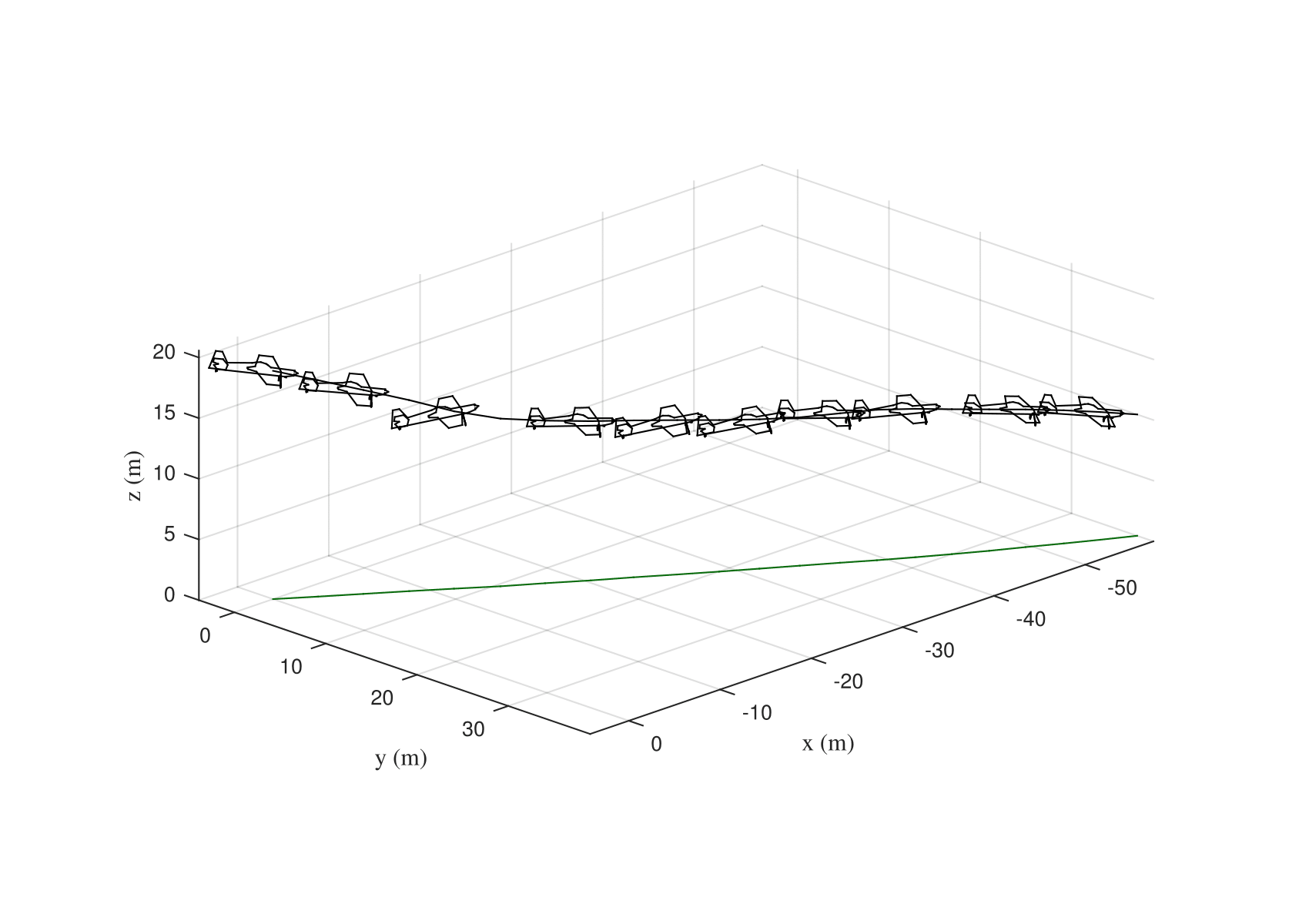
Trajectory of the aircraft during up elevator response.
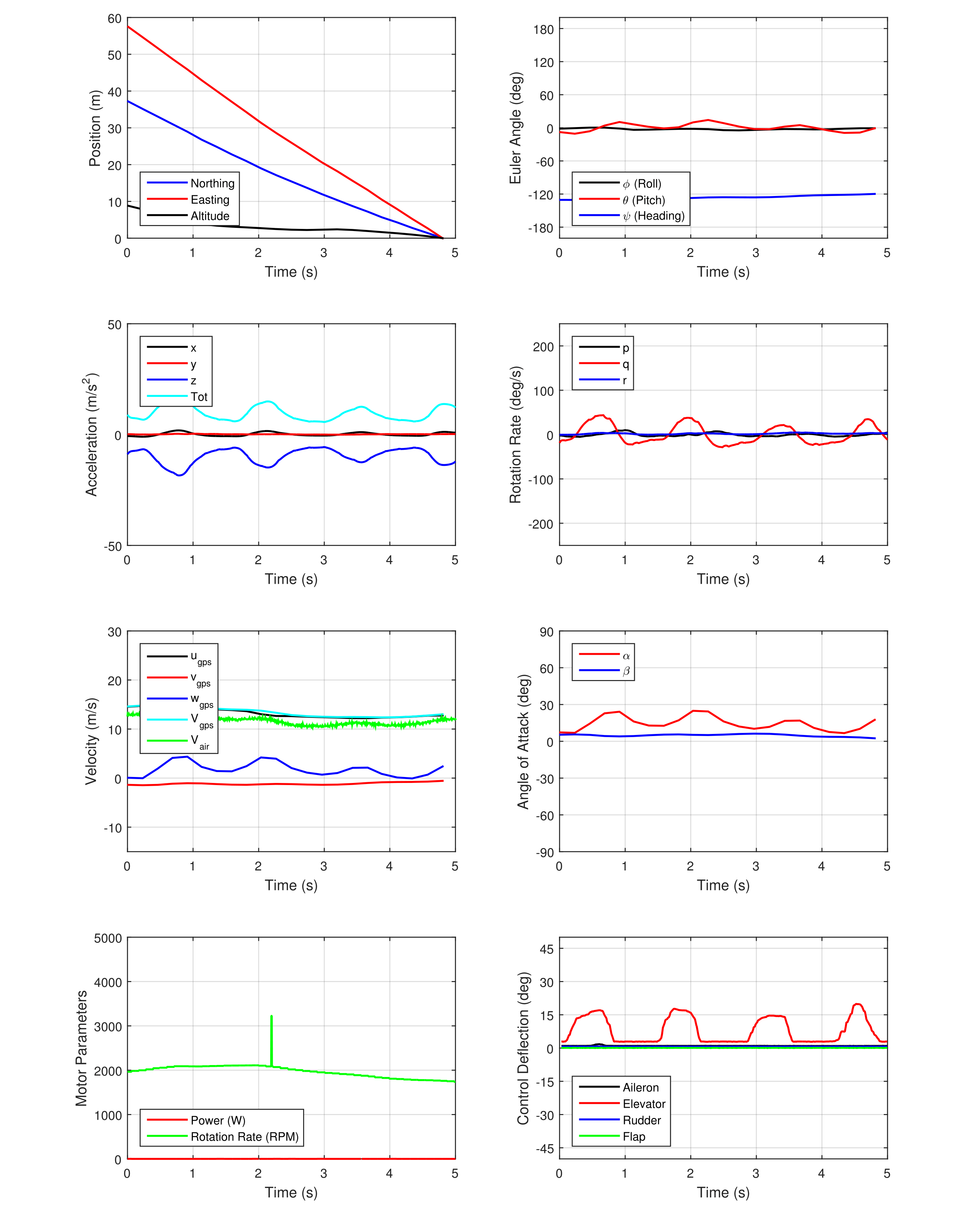
Time history of aircraft state during up elevator response.
down elevator response
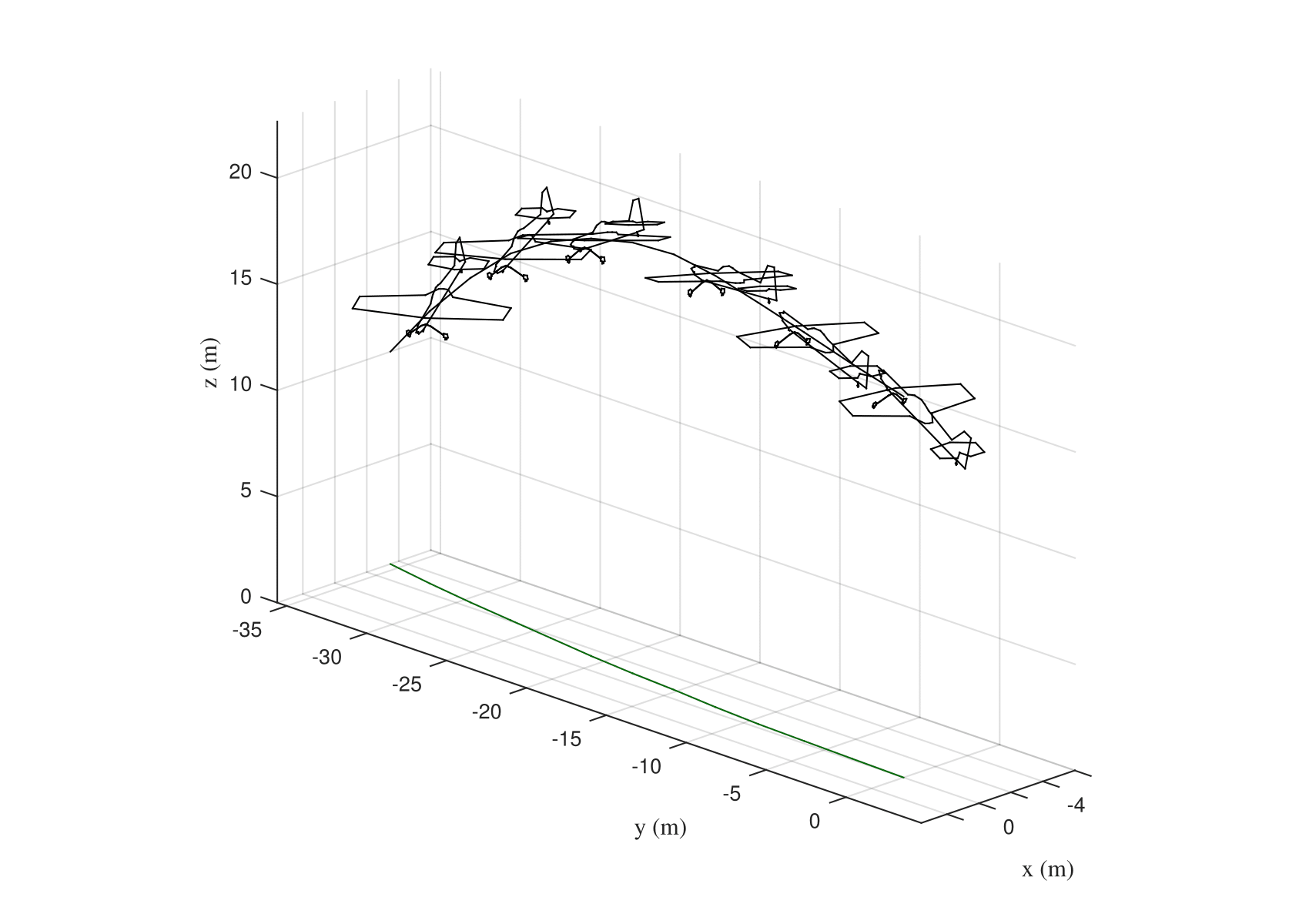
Trajectory of the aircraft during down elevator response.
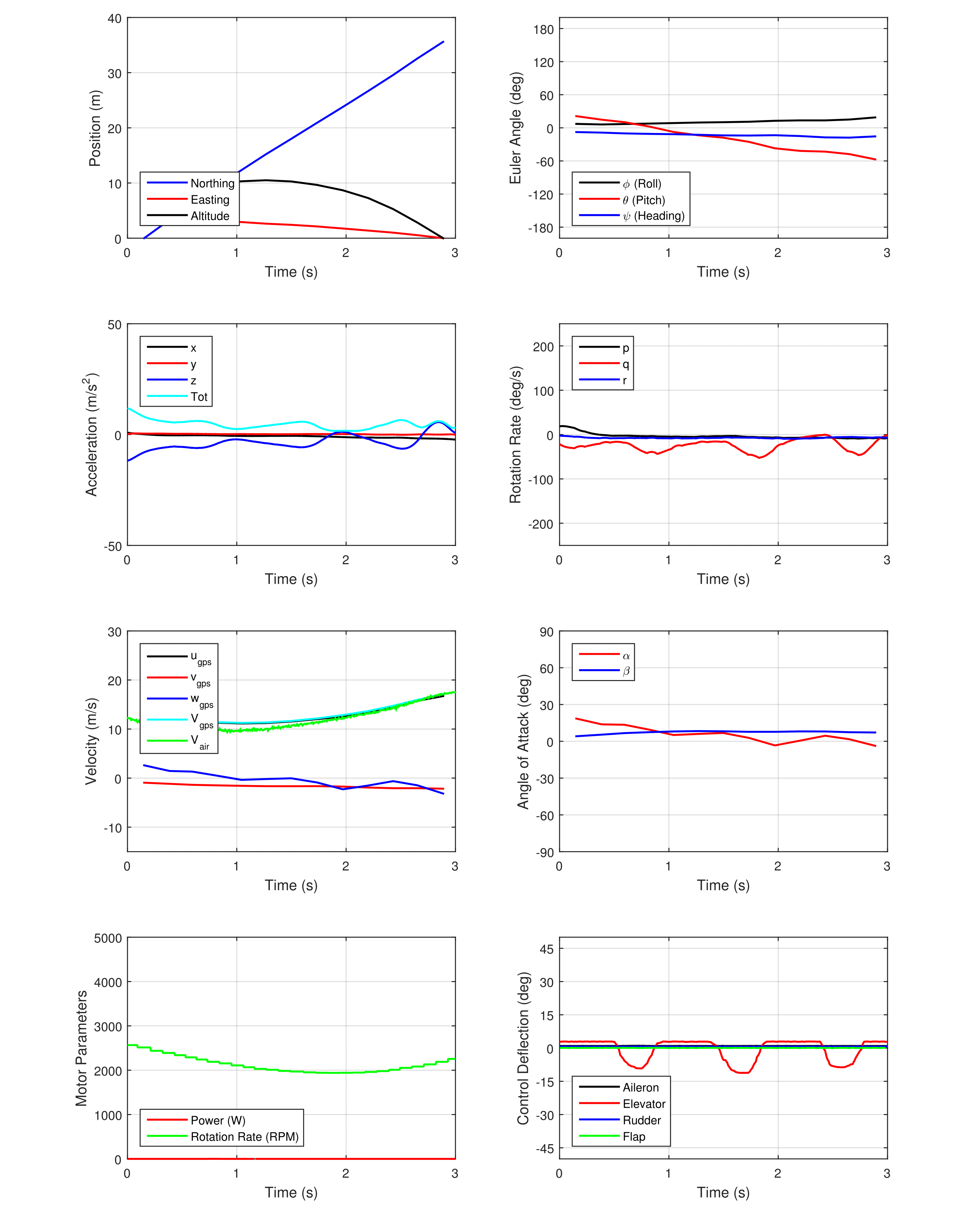
Time history of aircraft state during down elevator response.
up and down elevator response
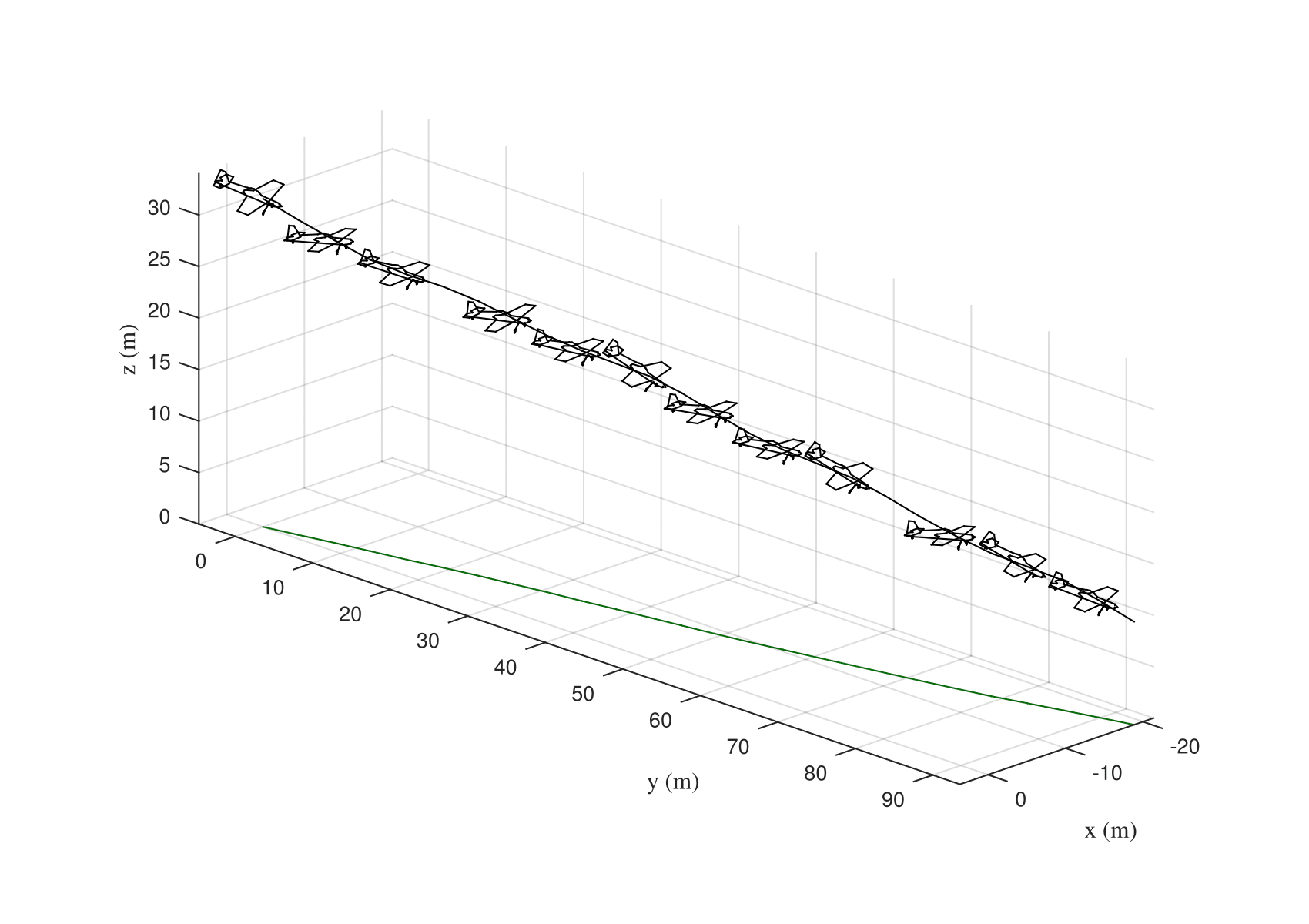
Trajectory of the aircraft during up and down elevator response.
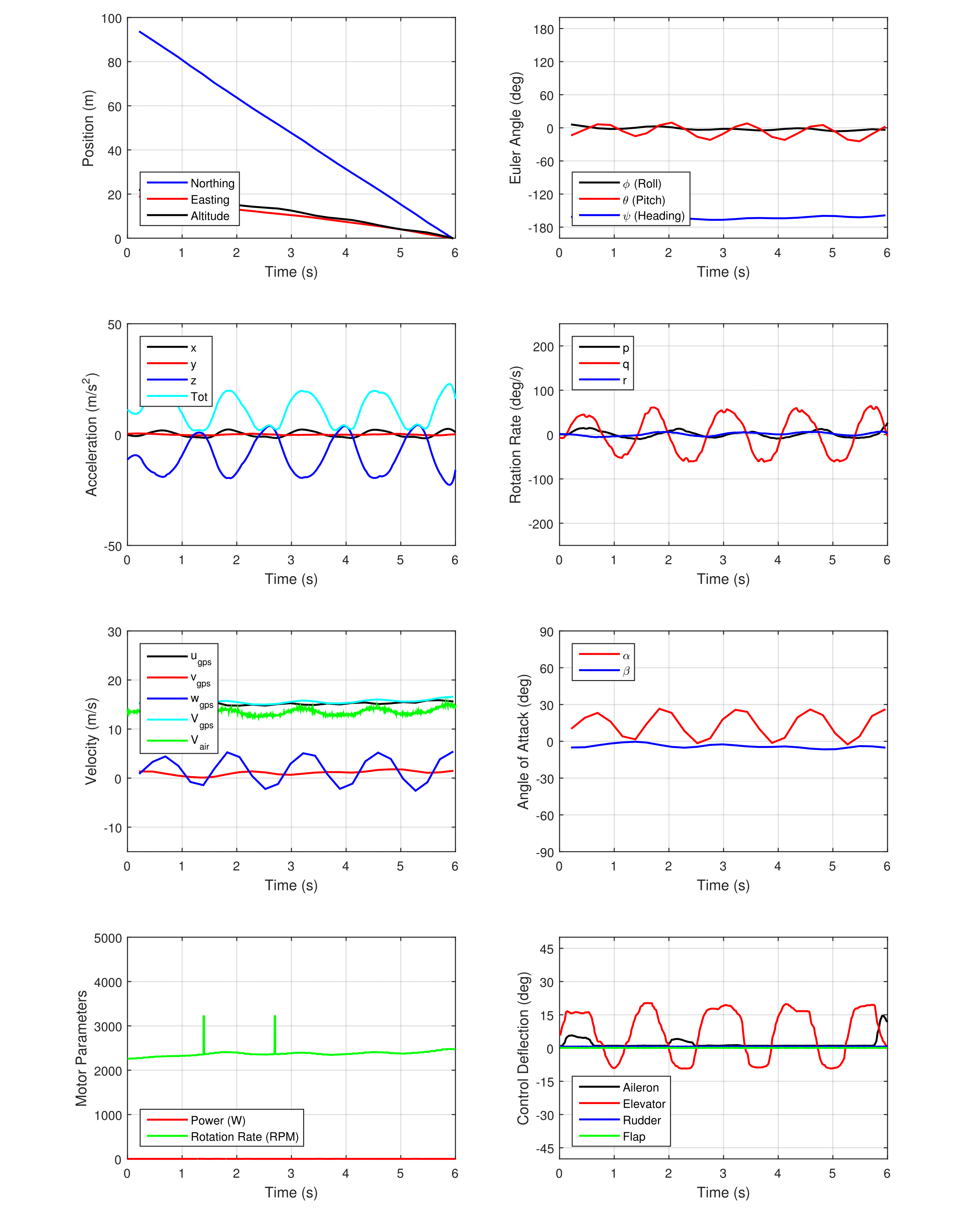
Time history of aircraft state during up and down elevator response.
Roll responses given below showed that the aircraft will roll in response to the aileron input until the pilot counteracts it. If the aircraft does not experience a counteracting aileron as an input, the aircraft will turn and bank until settles.
roll response with left aileron
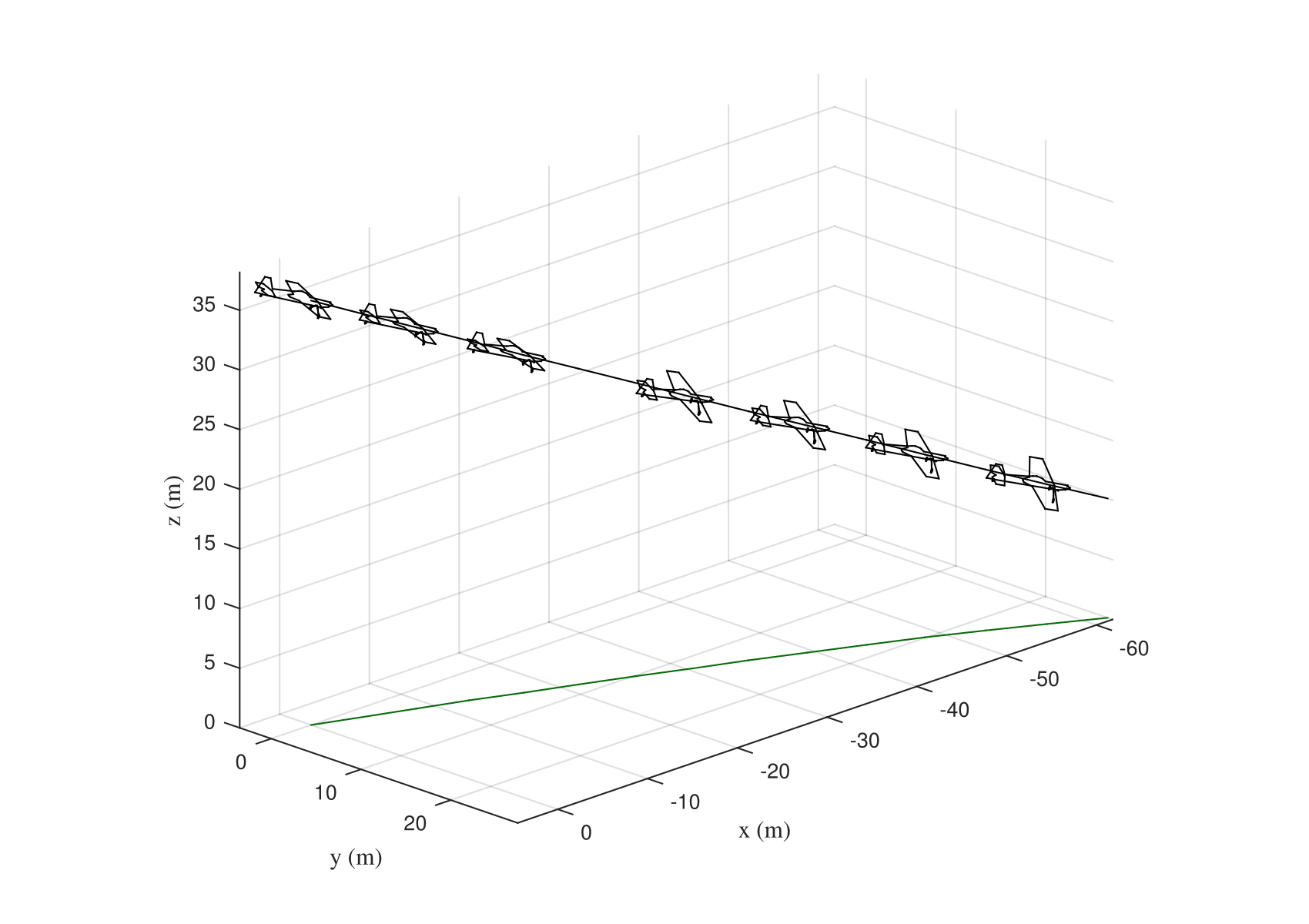
Trajectory of the aircraft during a roll response with left aileron.
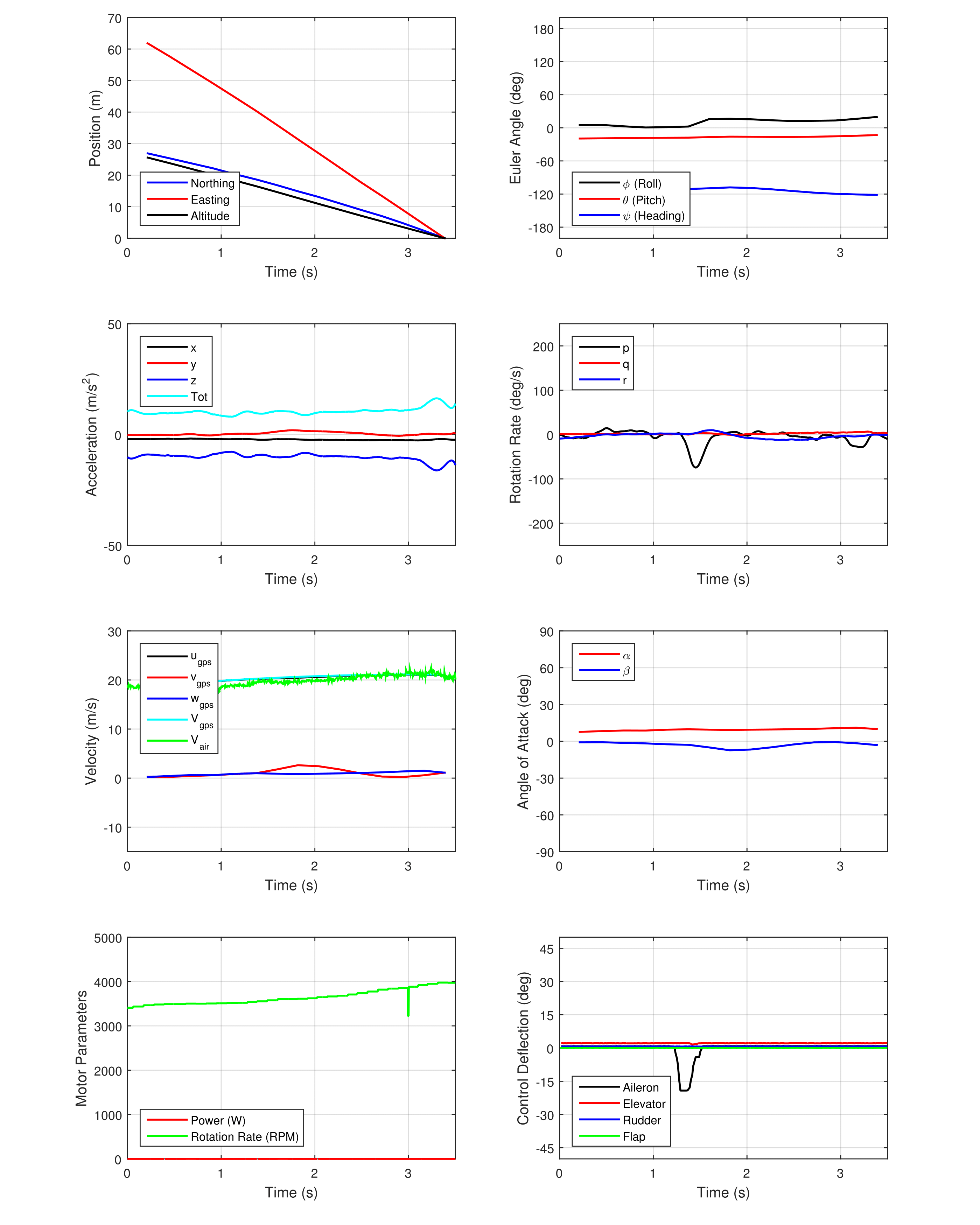
Time history of aircraft state during a roll response with left aileron.
roll response with left and right ailerons
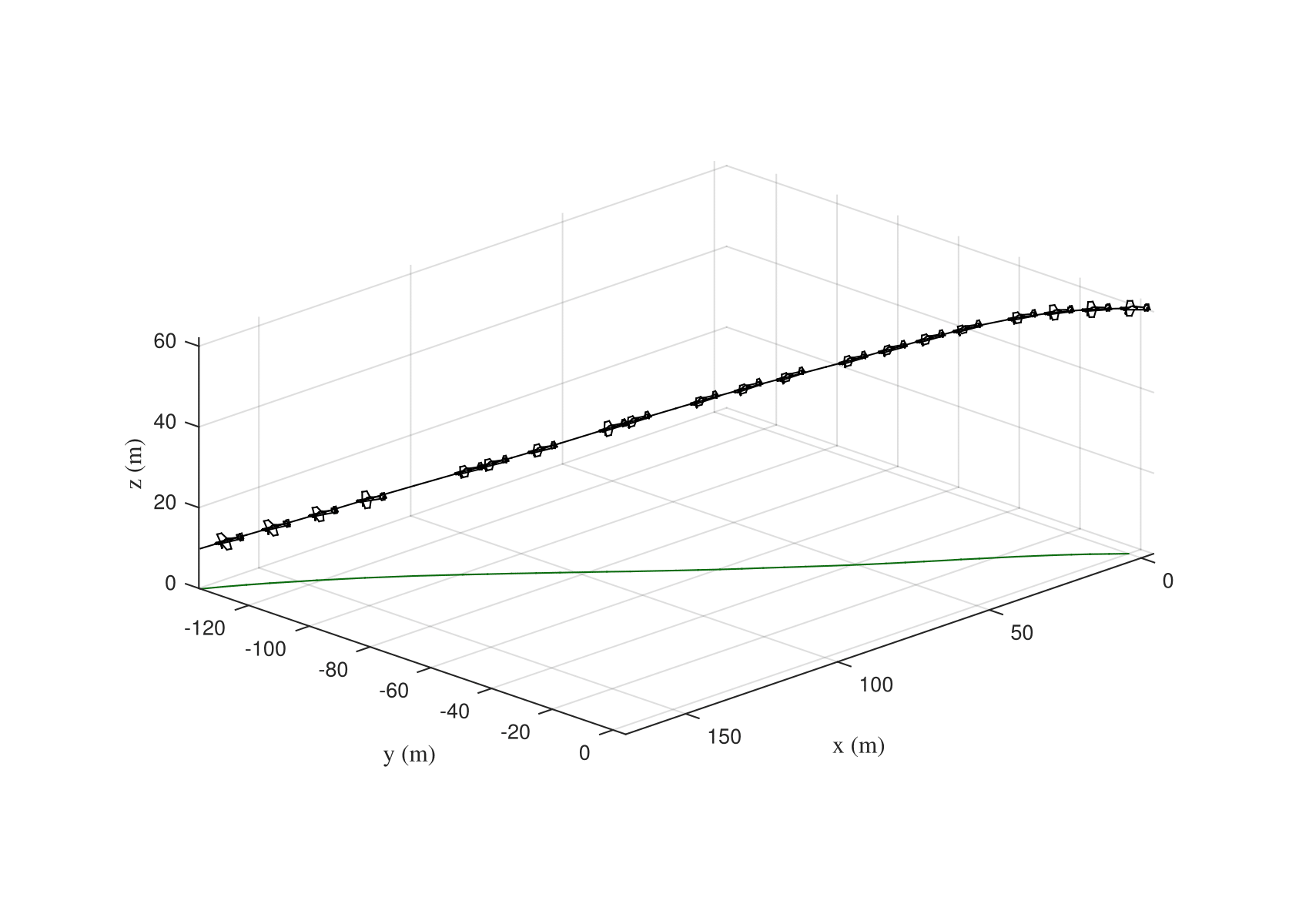
Trajectory of the aircraft during a roll response with left and right ailerons.
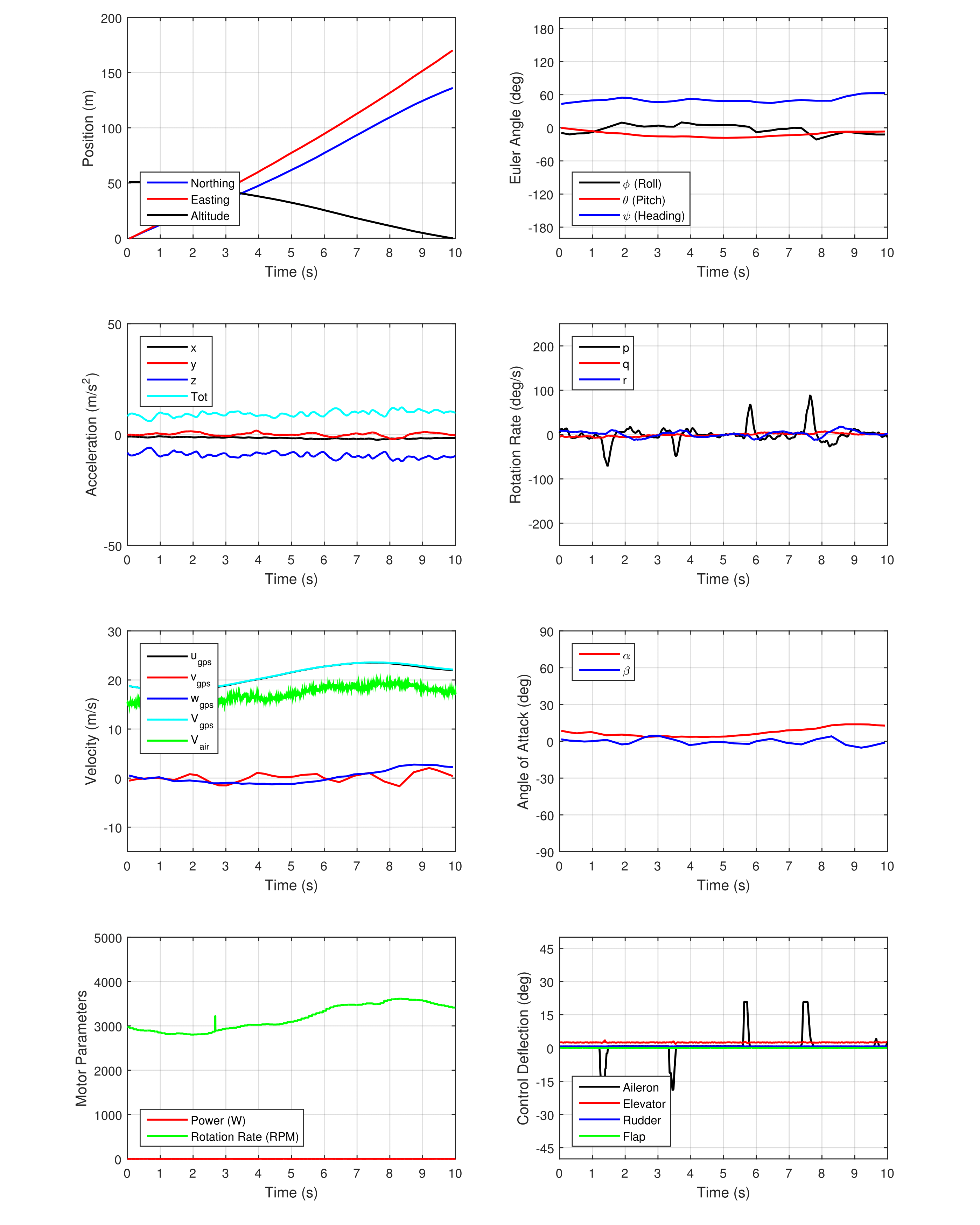
Time history of aircraft state during a roll response with left and right ailerons.
As the aircraft is designed to be laterally stable, small rudder oscillations such as those shown below will cause a it to side-slip slightly though it will return to its original heading. When the rudder is held longer, as seen further down, the aircraft will begin to bank as side-slip causes a rolling moment to act on the aircraft.
left and right rudder inputs
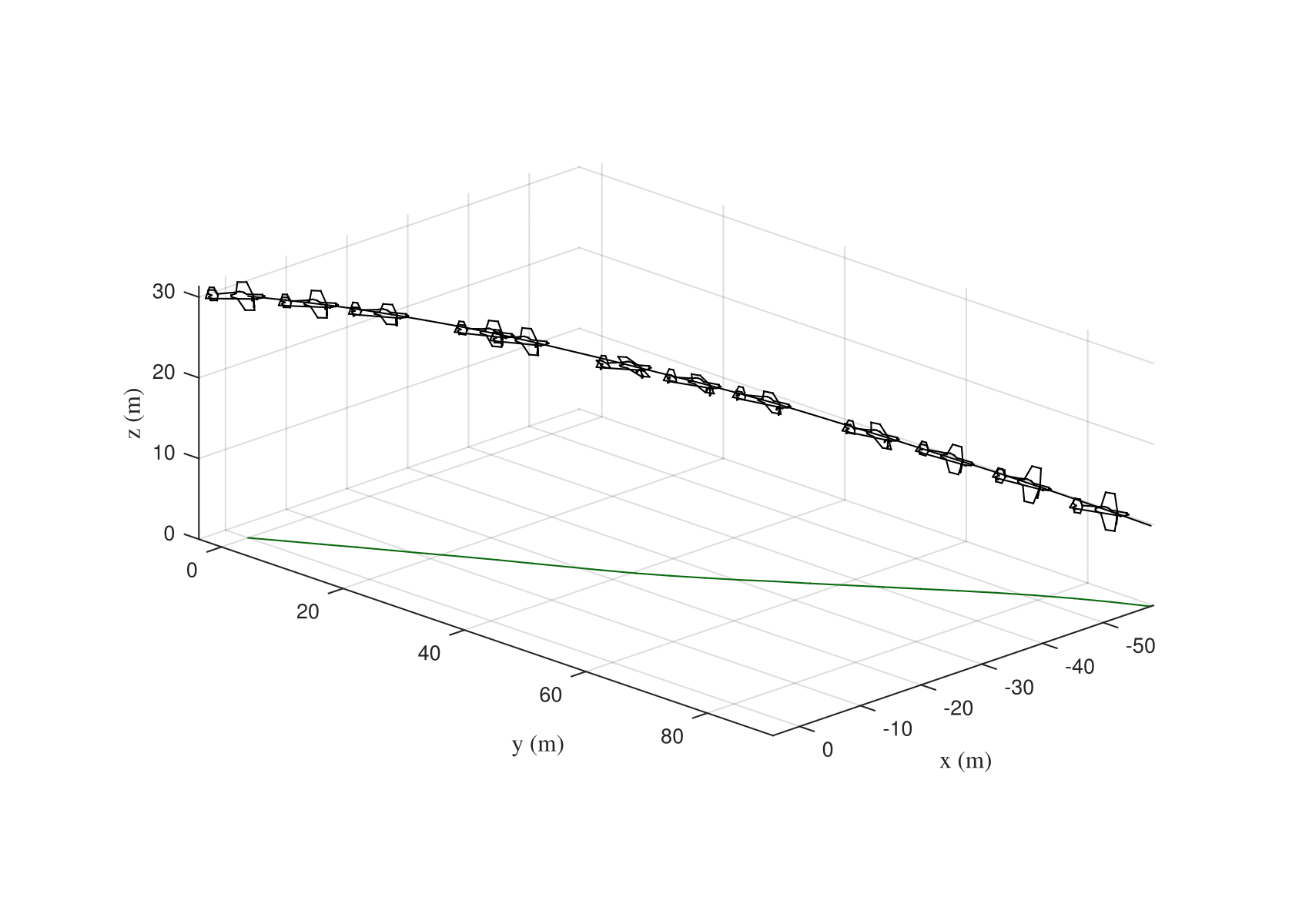
Trajectory of the aircraft during left and right rudder inputs.
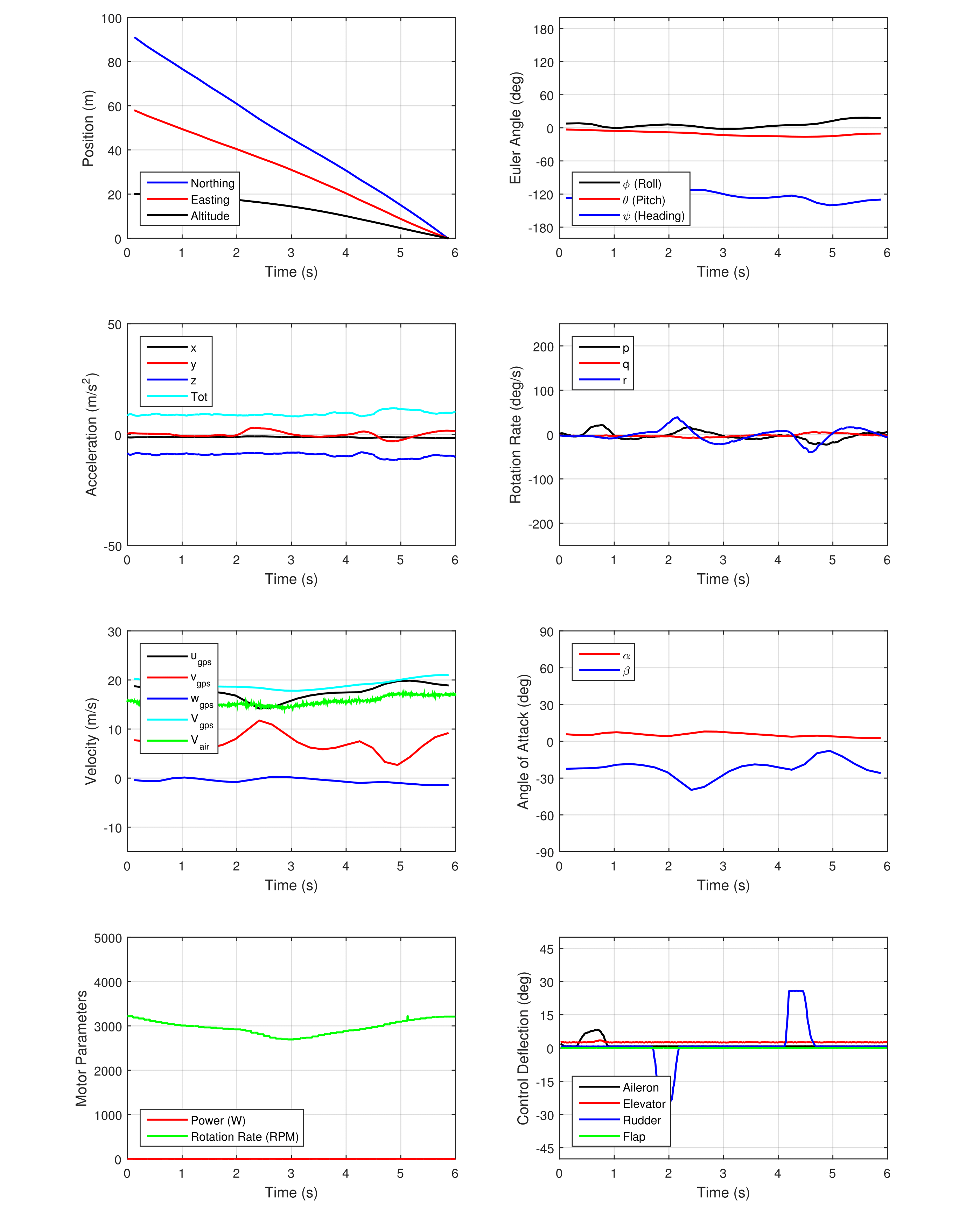
Time history of aircraft state during left and right rudder inputs.
continuous rudder input
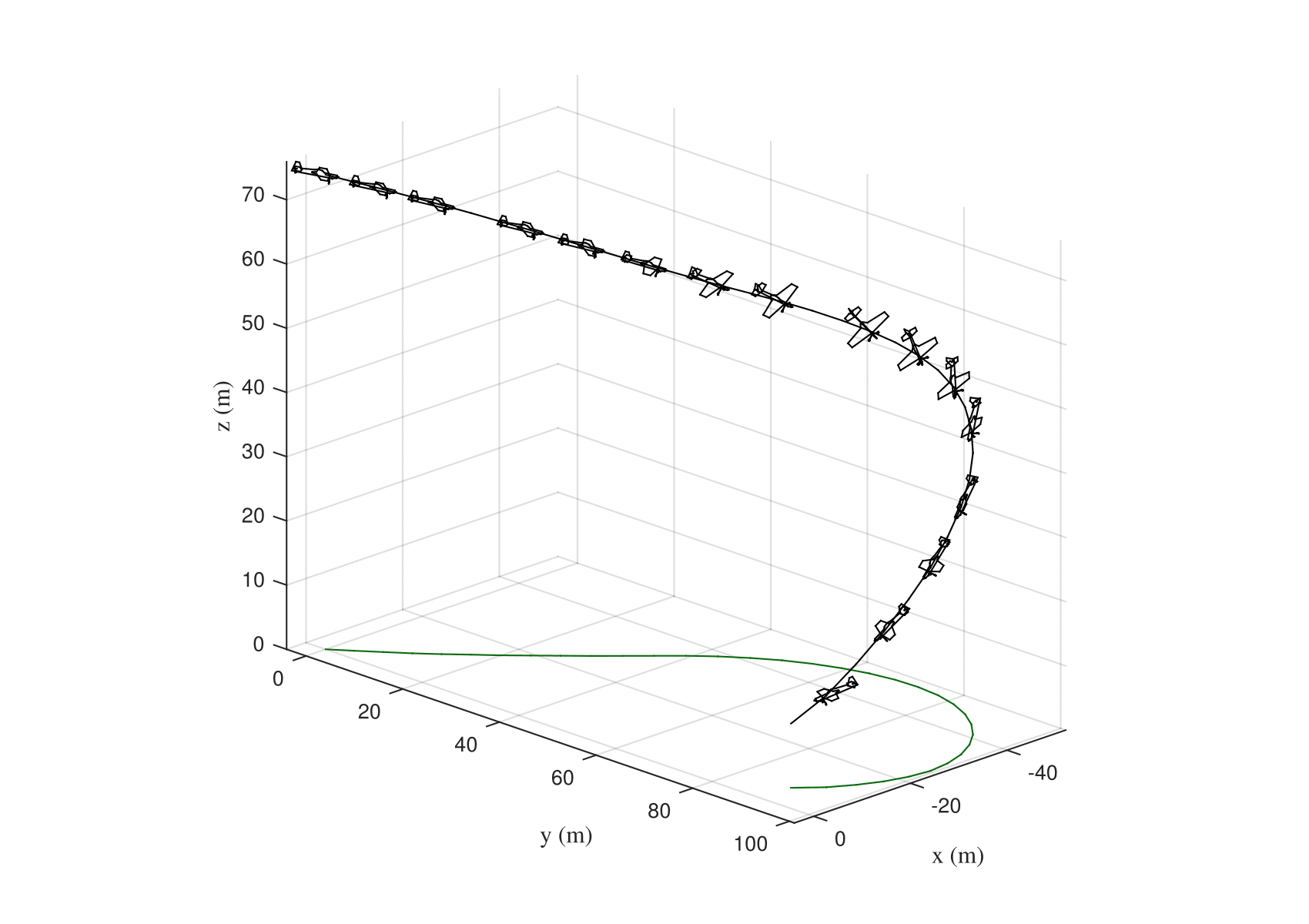
Trajectory of the aircraft during continuous rudder input.
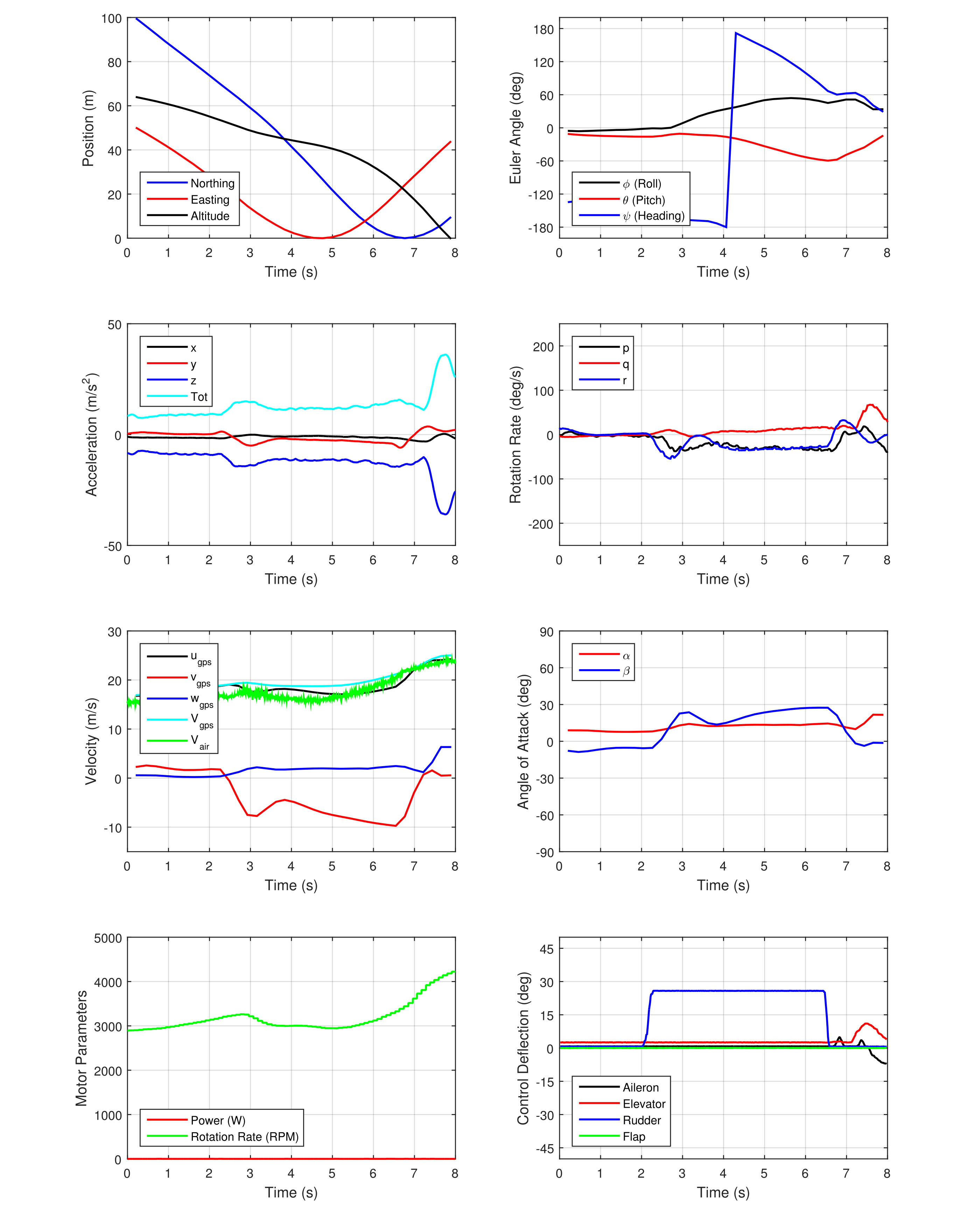
Time history of aircraft state during continuous rudder input.
The phugoids maneuvers shown below are all performed with the aircraft trim settings. The settling time increased as the flap settings increased from zero to full flaps. This behavior is very atypical for aircraft, but is suspected to be related to the STOL nature of the Sport Cub S2.
phugoid with no flaps
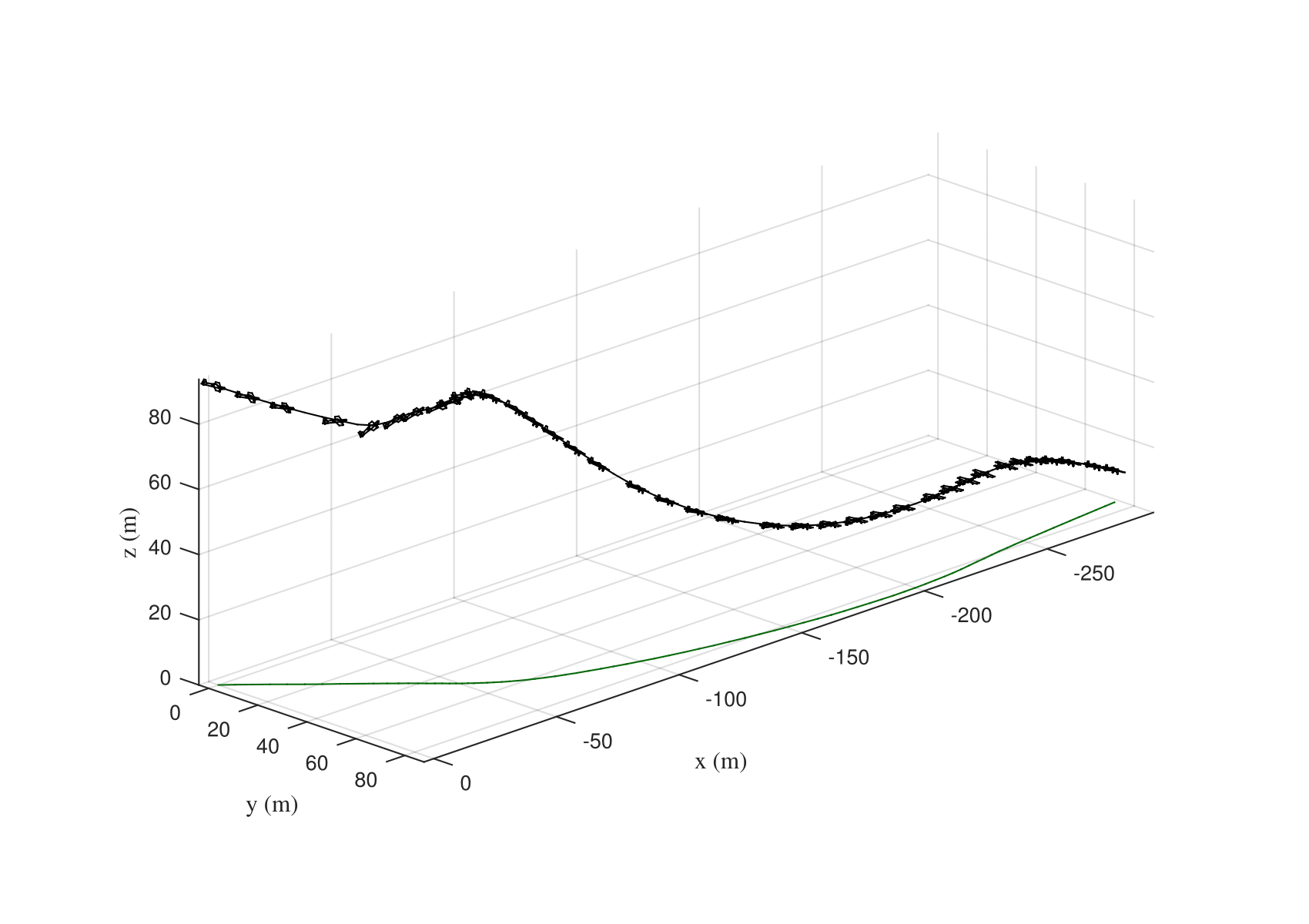
Trajectory of the aircraft during a phugoid with no flaps.
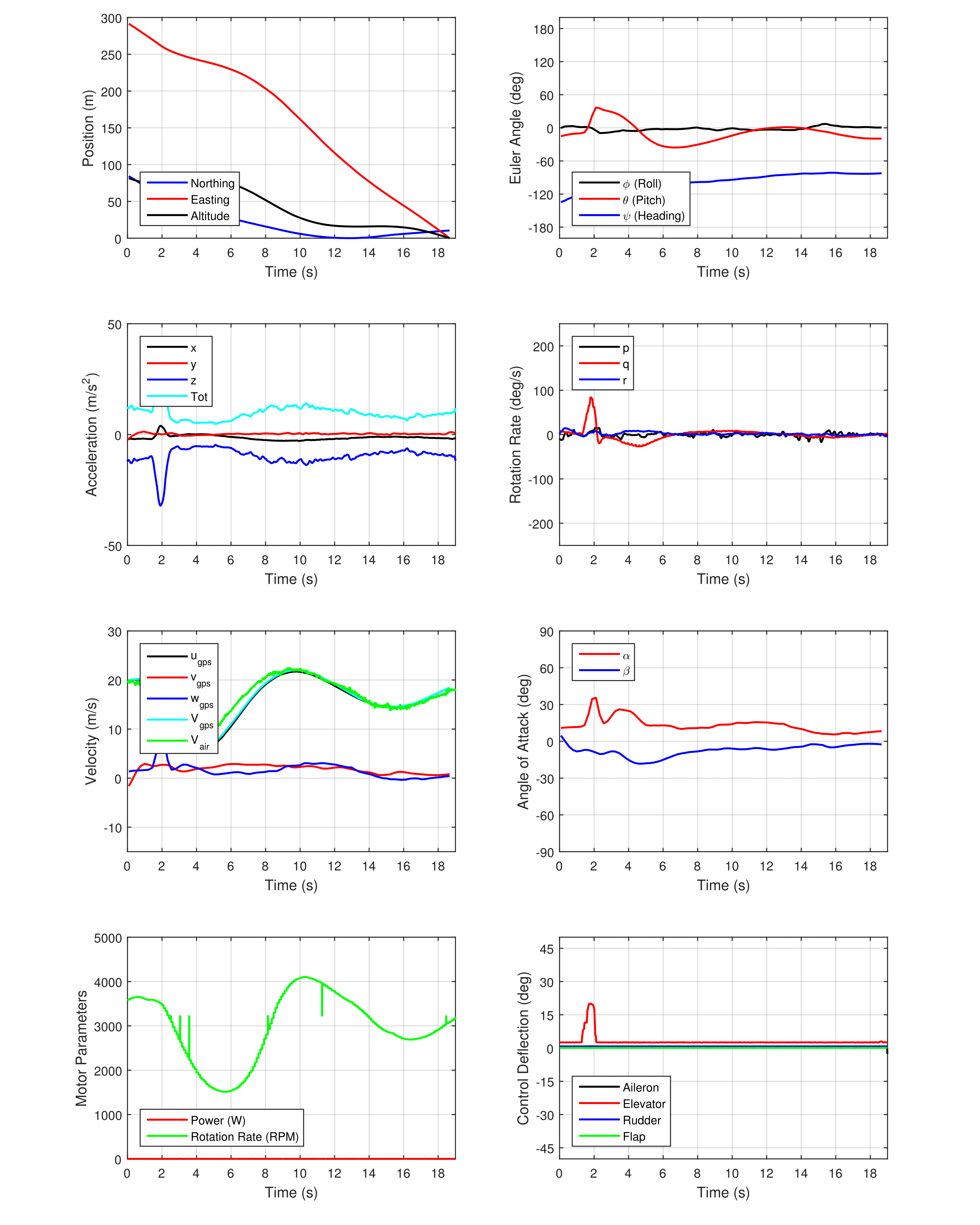
Time history of aircraft state during a phugoid with no flaps.
phugoid with full flaps
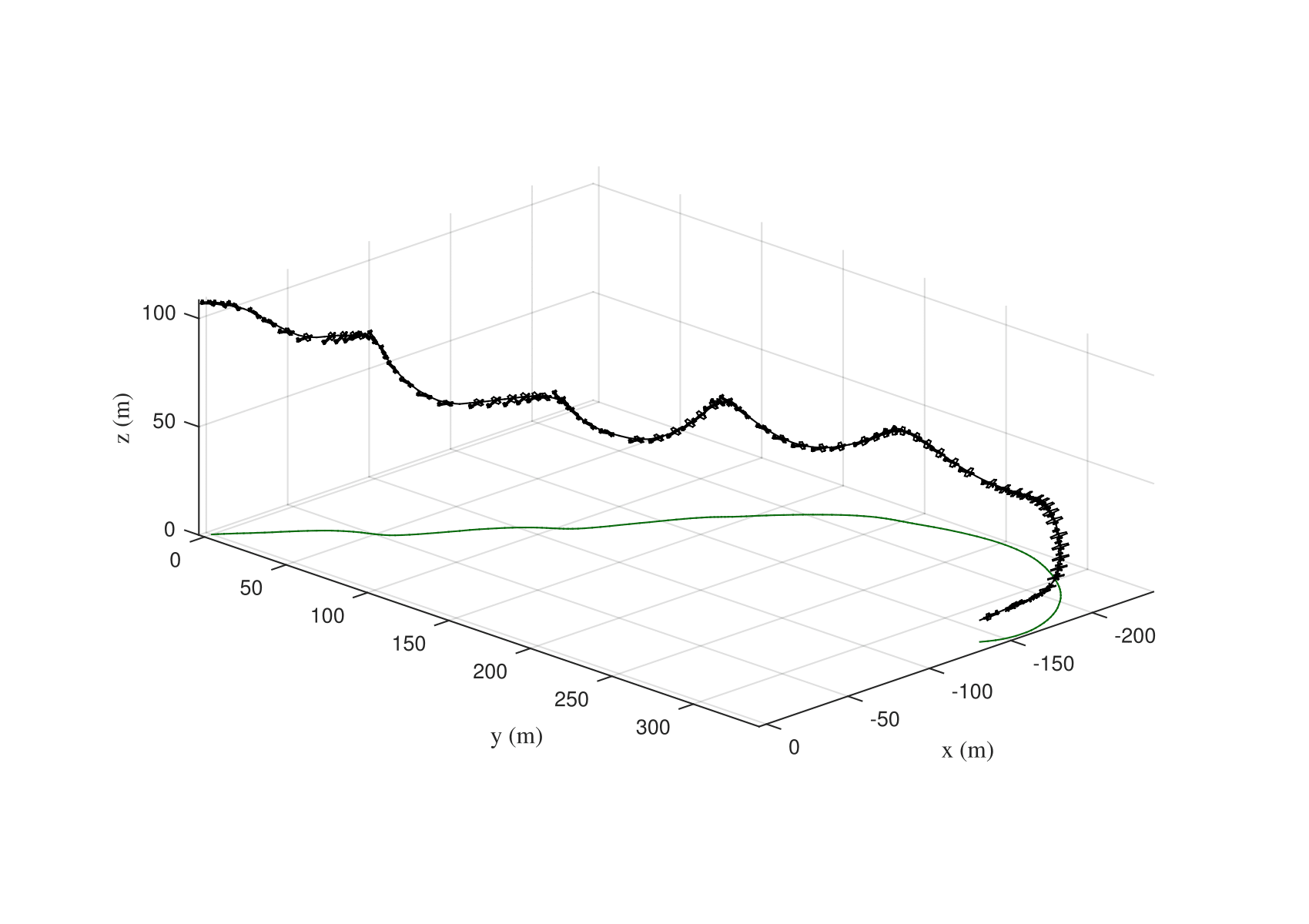
Trajectory of the aircraft during a phugoid with full flaps.
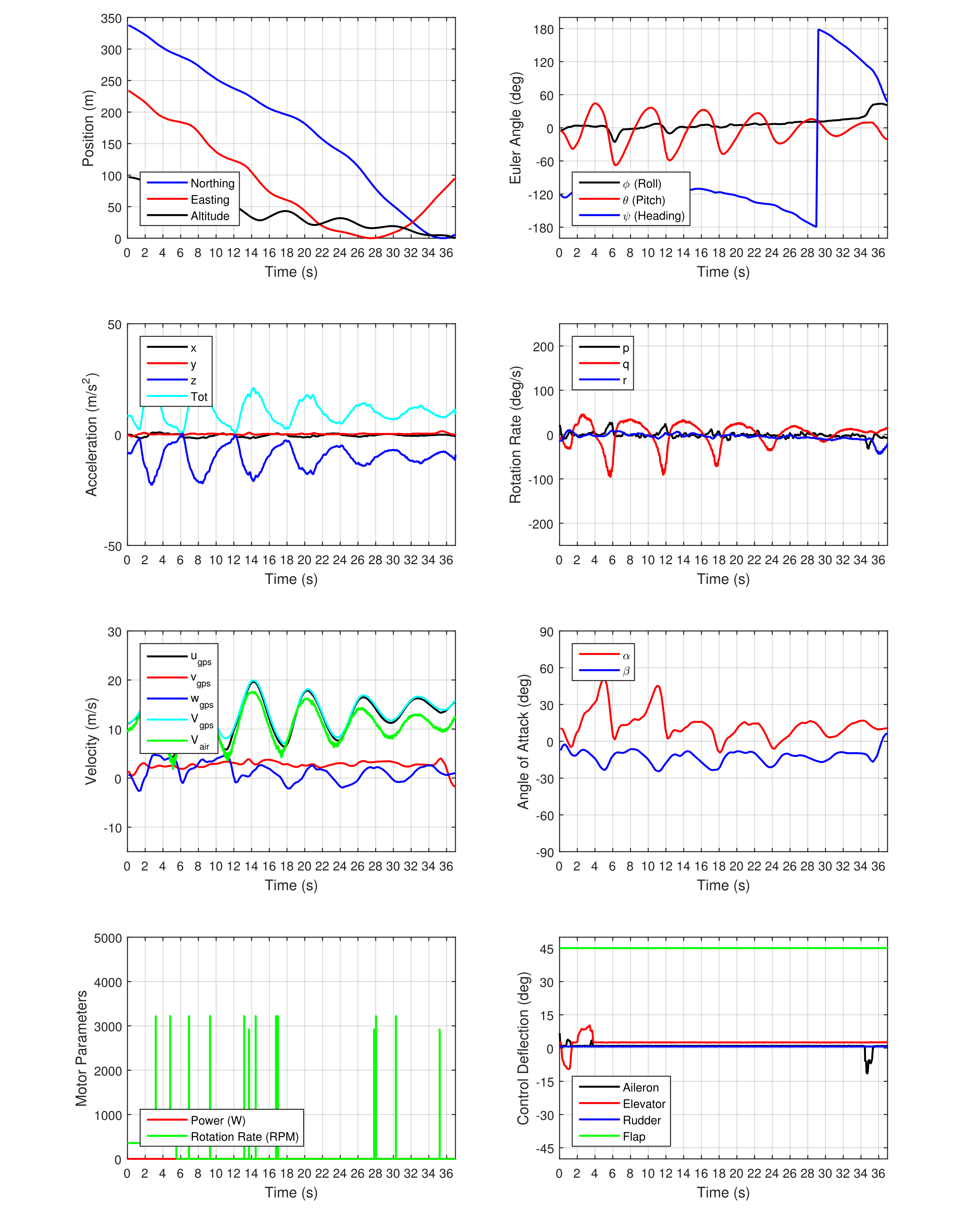
Time history of aircraft state during a phugoid with full flaps.
The aircraft was put into a stall as shown below. It returned back into a stable configuration without requiring pilot input. When the aircraft reached its stall angle, it pitched downward as the wing surface stalled before the horizontal surface.
stall with zero flap
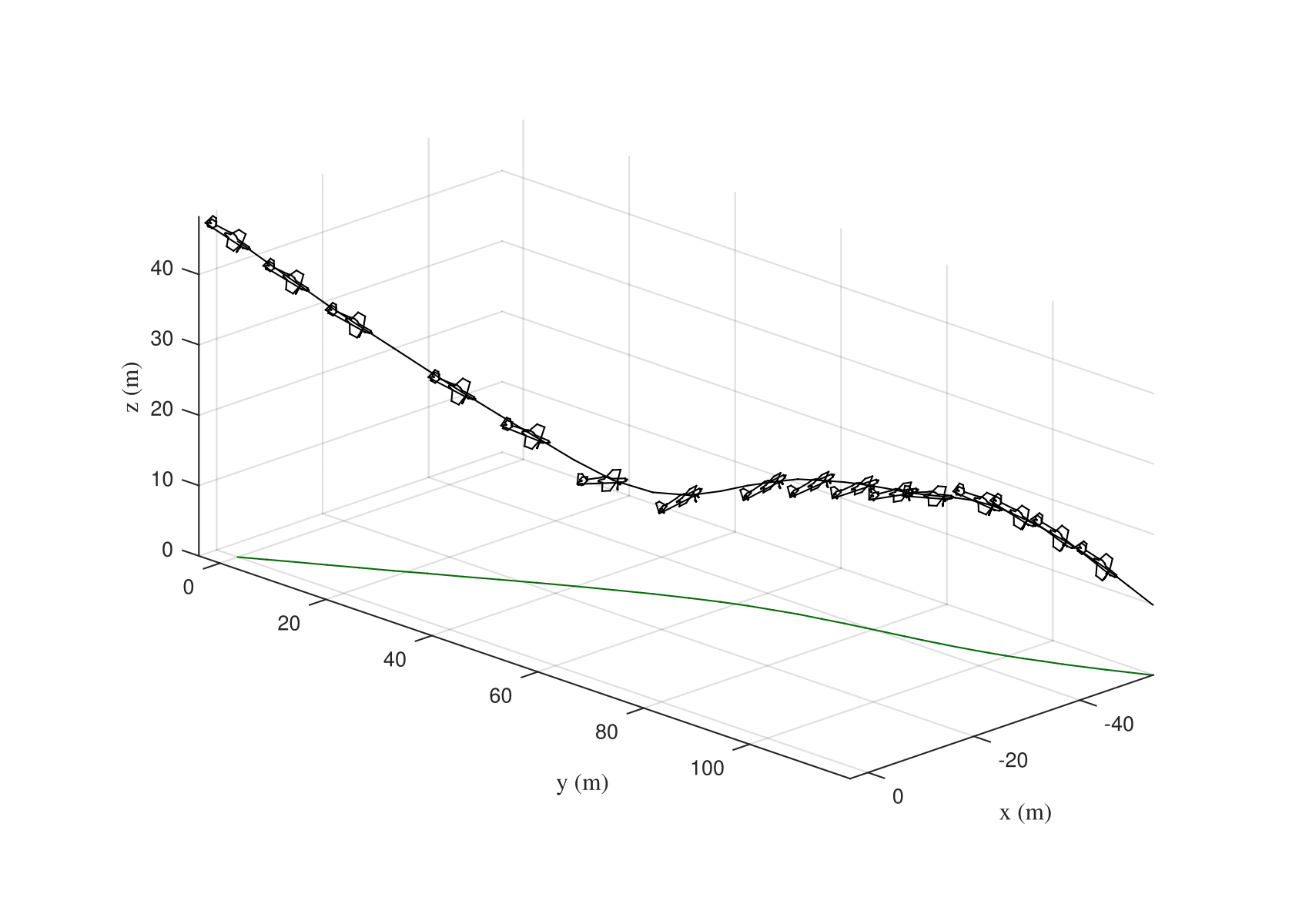
Trajectory of the aircraft during stall with zero flap.
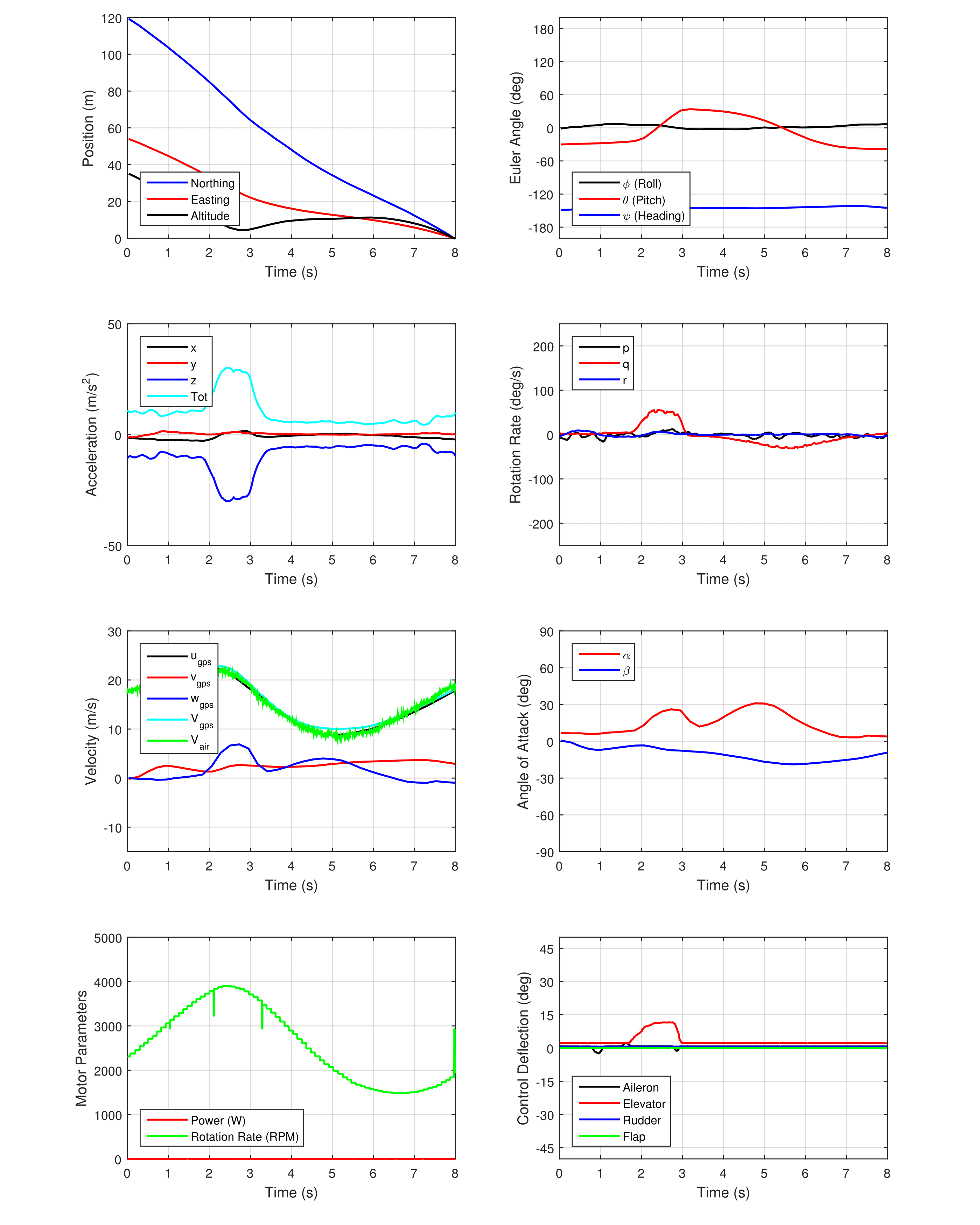
Time history of aircraft state during stall with zero flap.
stall with full flap
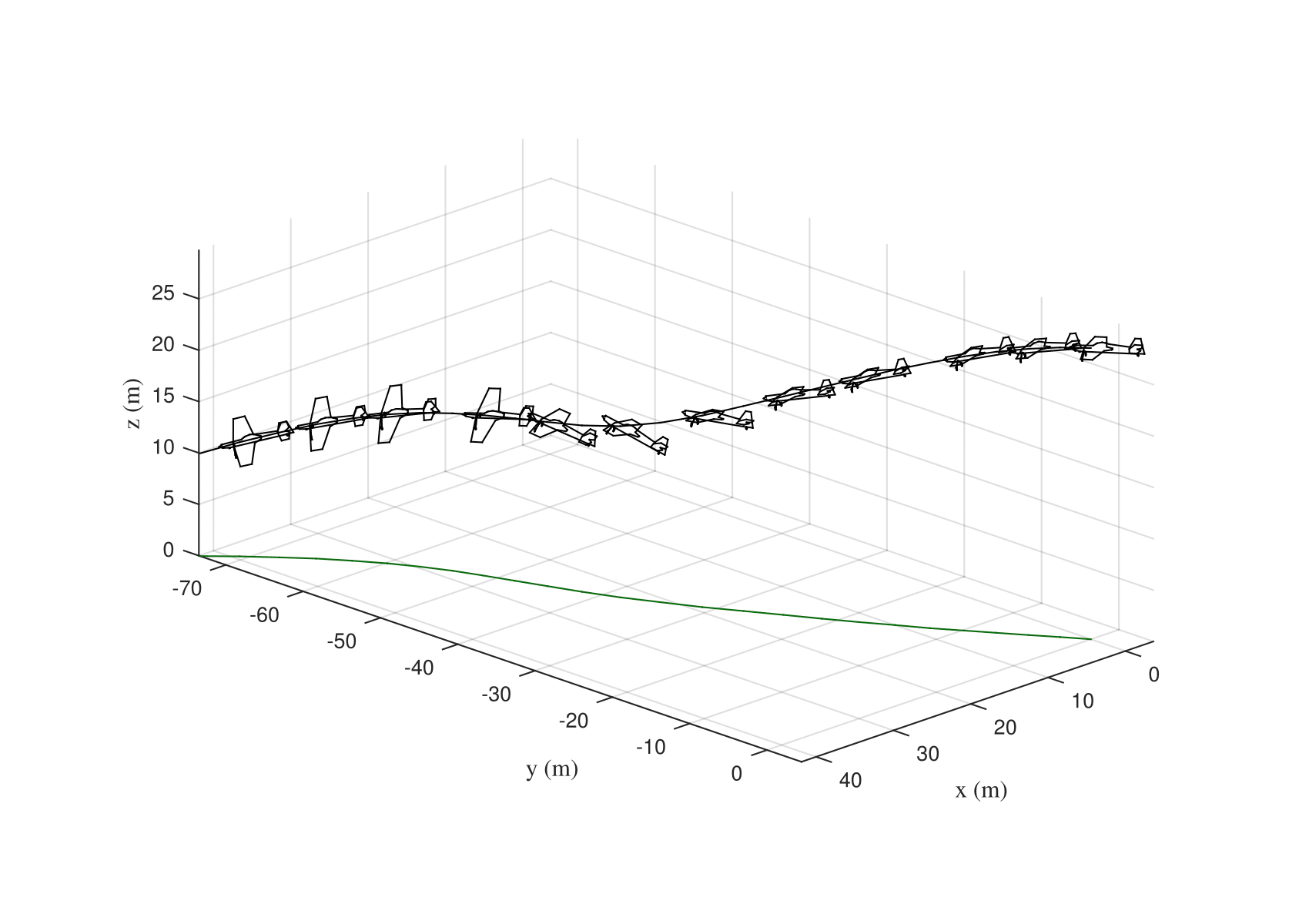
Trajectory of the aircraft during stall with full flap.
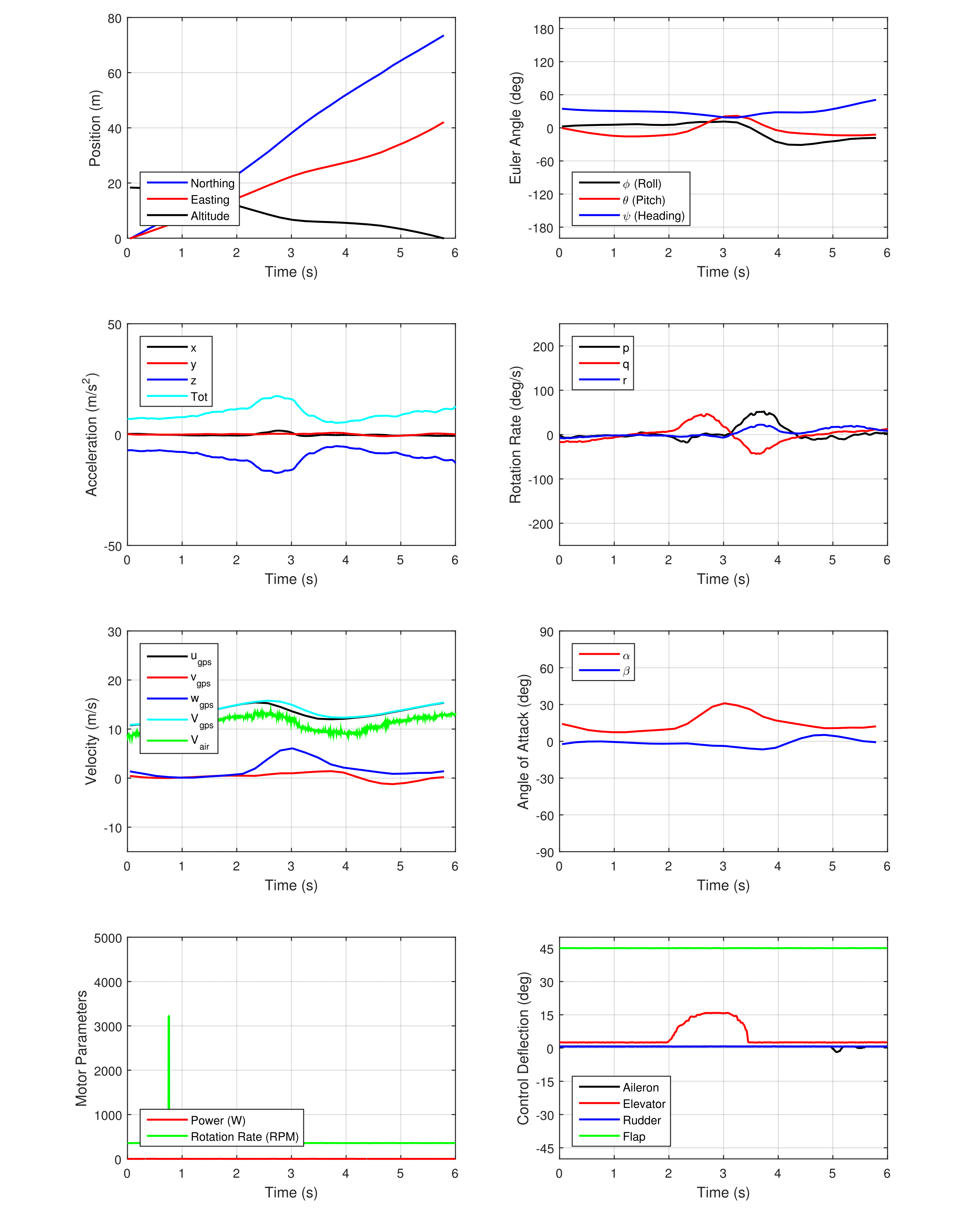
Time history of aircraft state during stall with full flap.
deep stall with zero flap
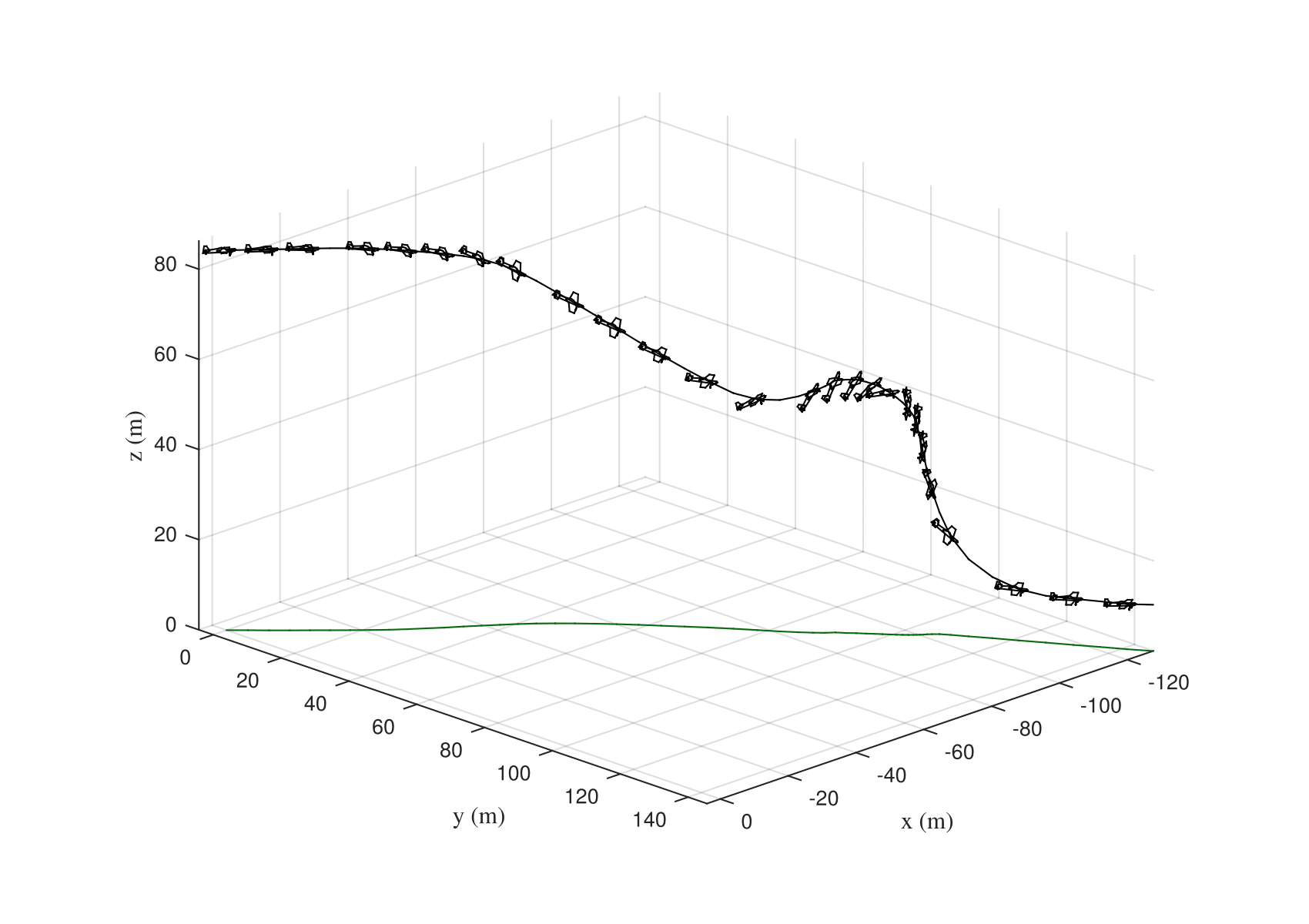
Trajectory of the aircraft during deep stall with zero flap.
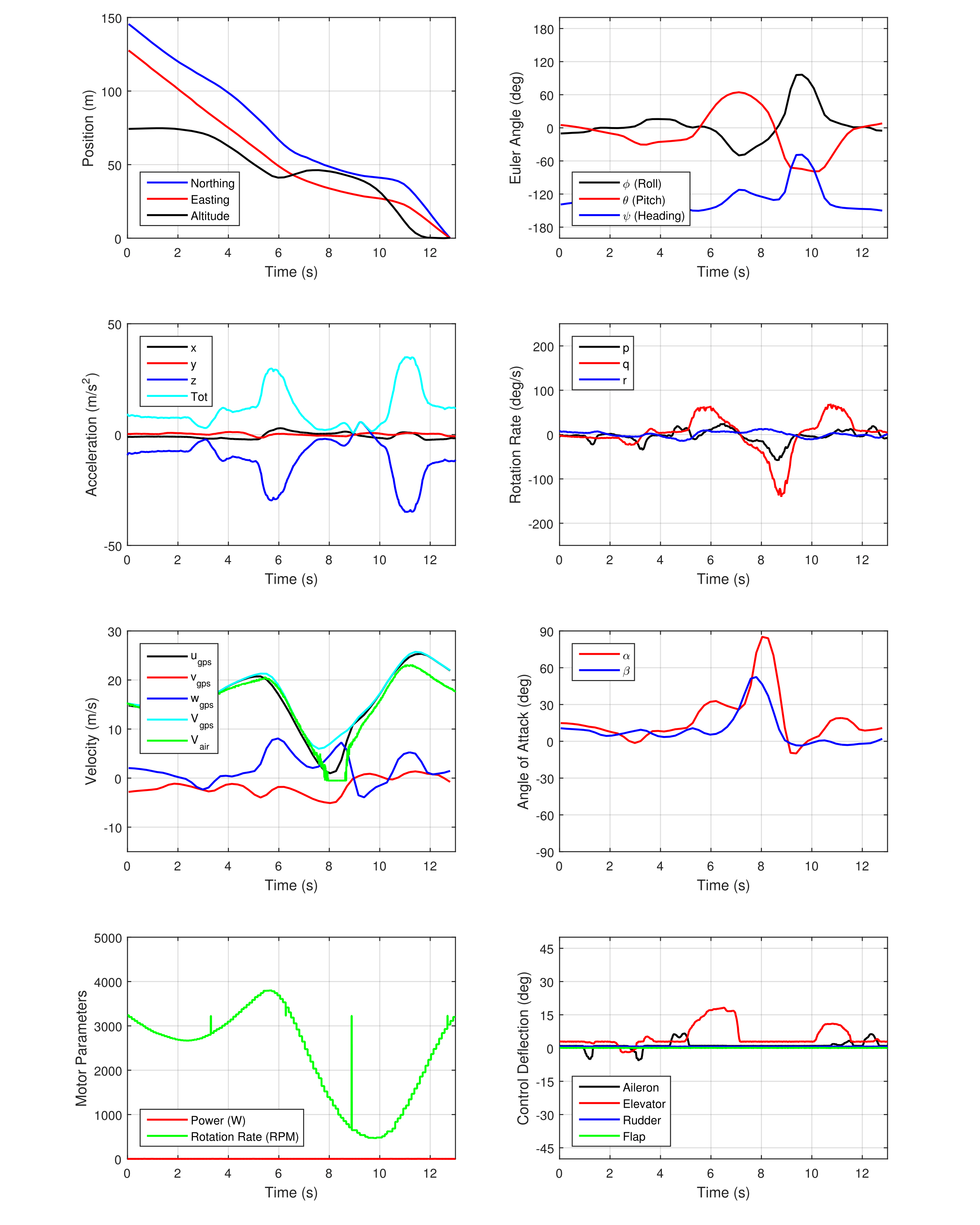
Time history of aircraft state during deep stall with zero flap.
The spin maneuvers were conducted by applying full rudder and up elevator to causing the aircraft to upset and enter a spin. All of spin maneuvers settled back into stable configuration within half of a revolution once the pilot released the control input.
spin with zero flap
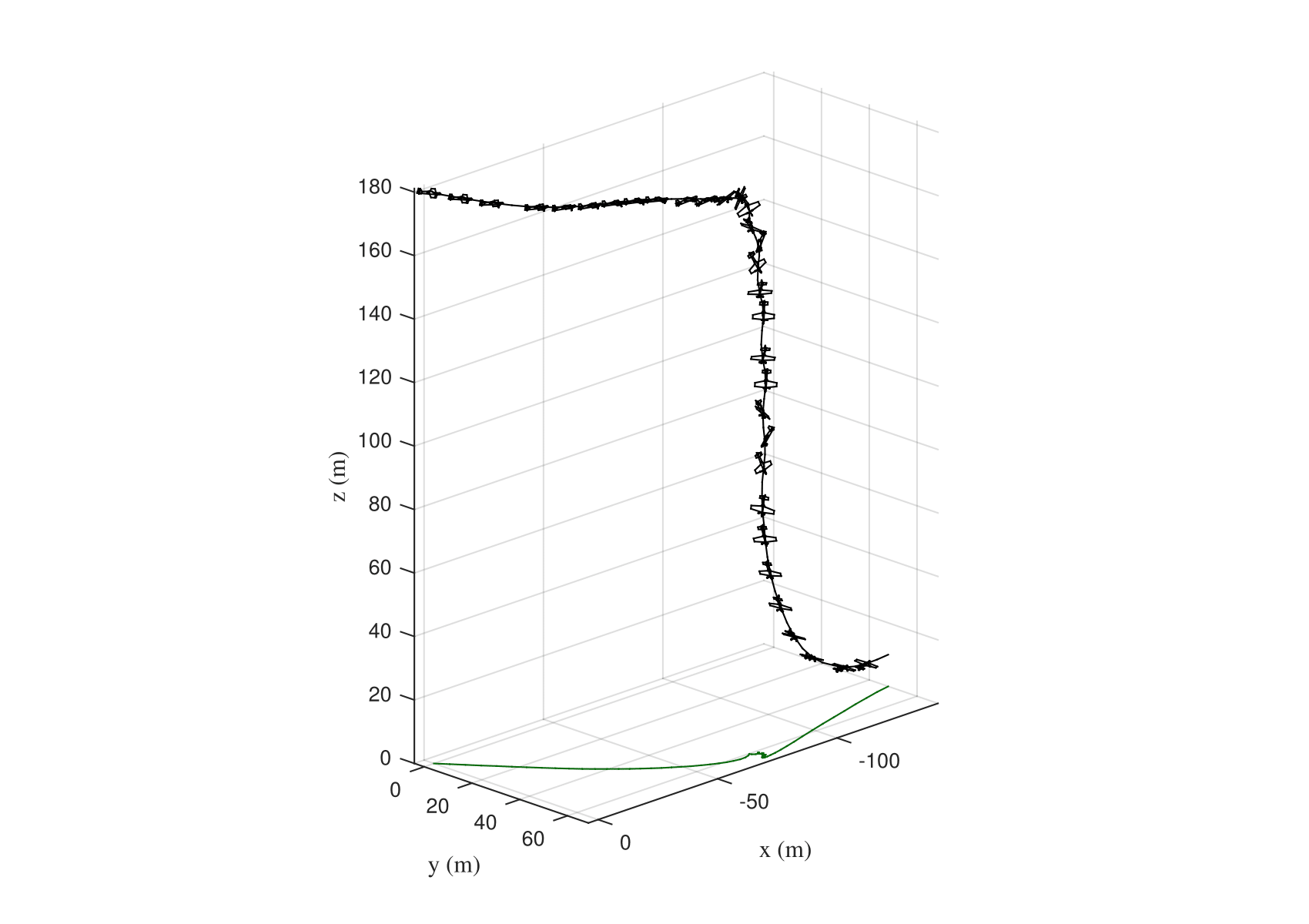
Trajectory of the aircraft during spin with zero flap.
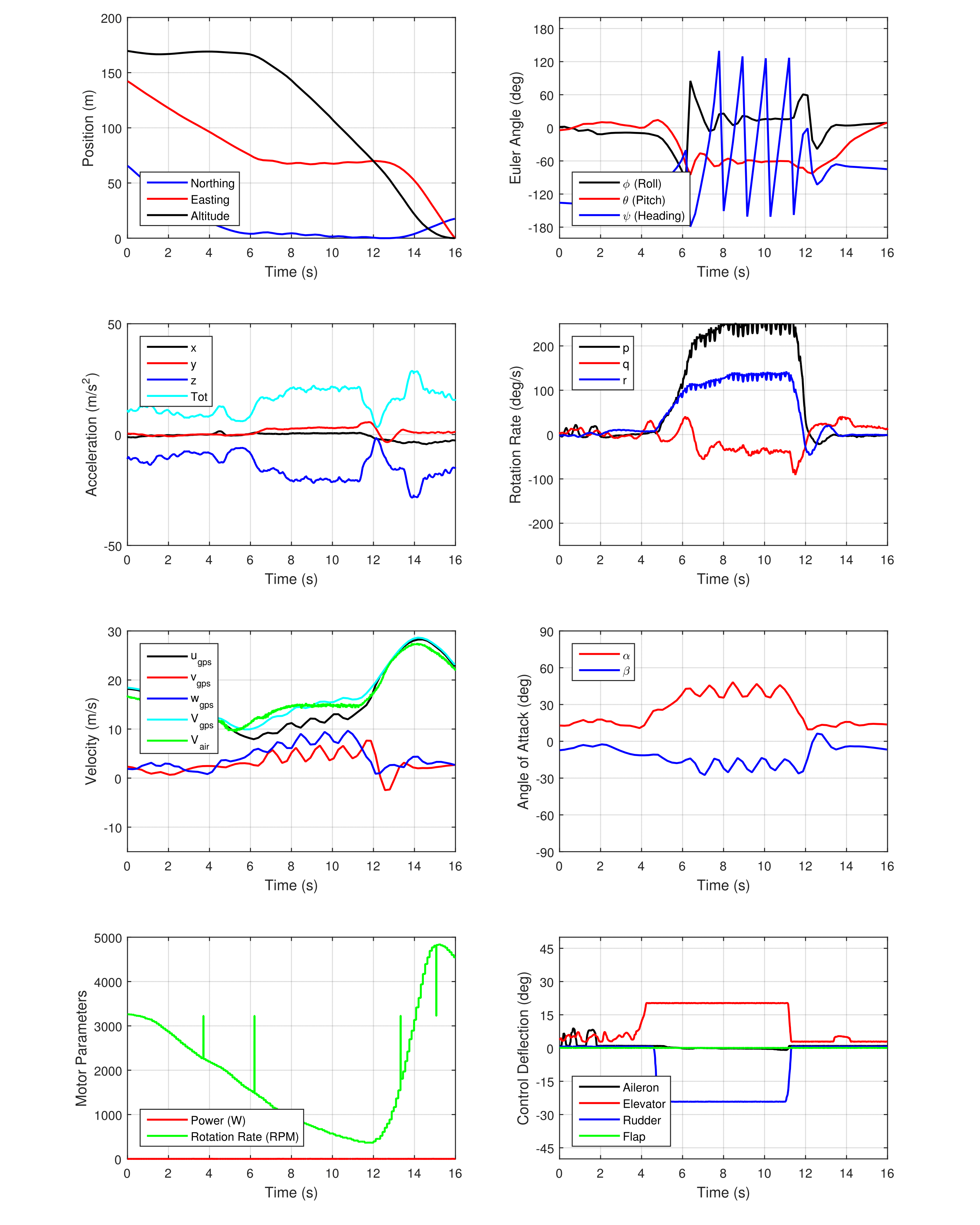
Time history of aircraft state during spin with zero flap.
spin with full flap
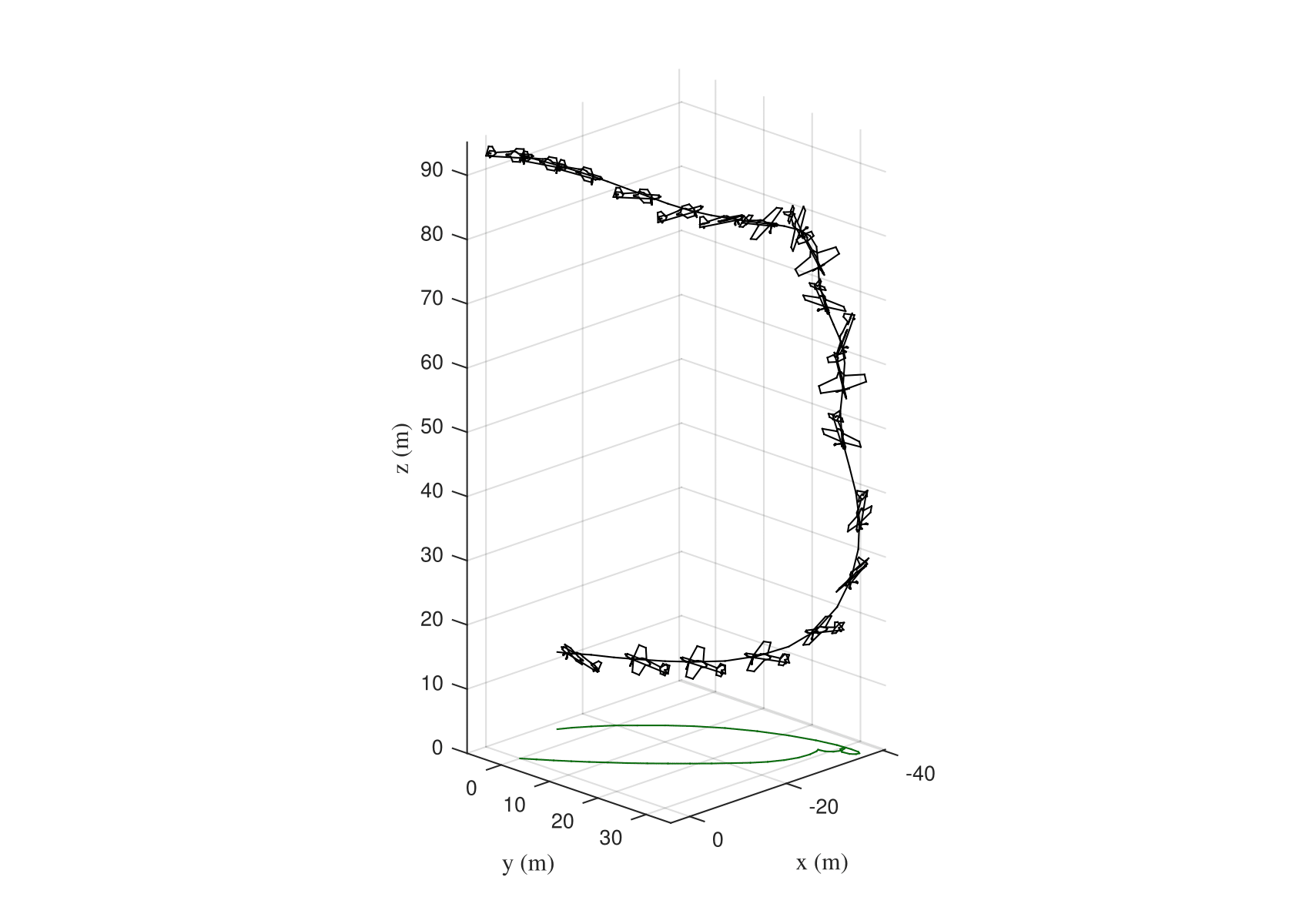
Trajectory of the aircraft during spin with full flap.
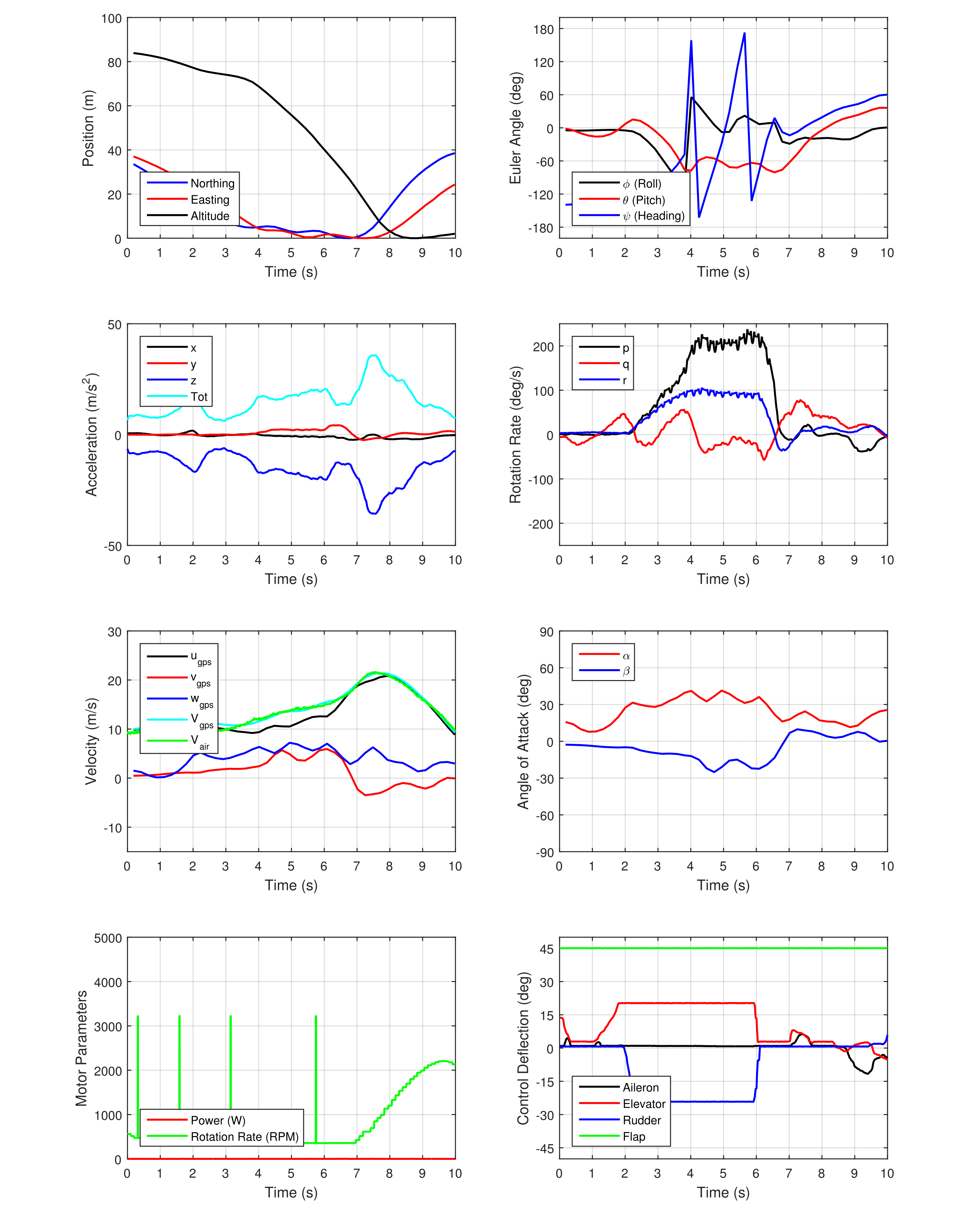
Time history of aircraft state during spin with full flap.